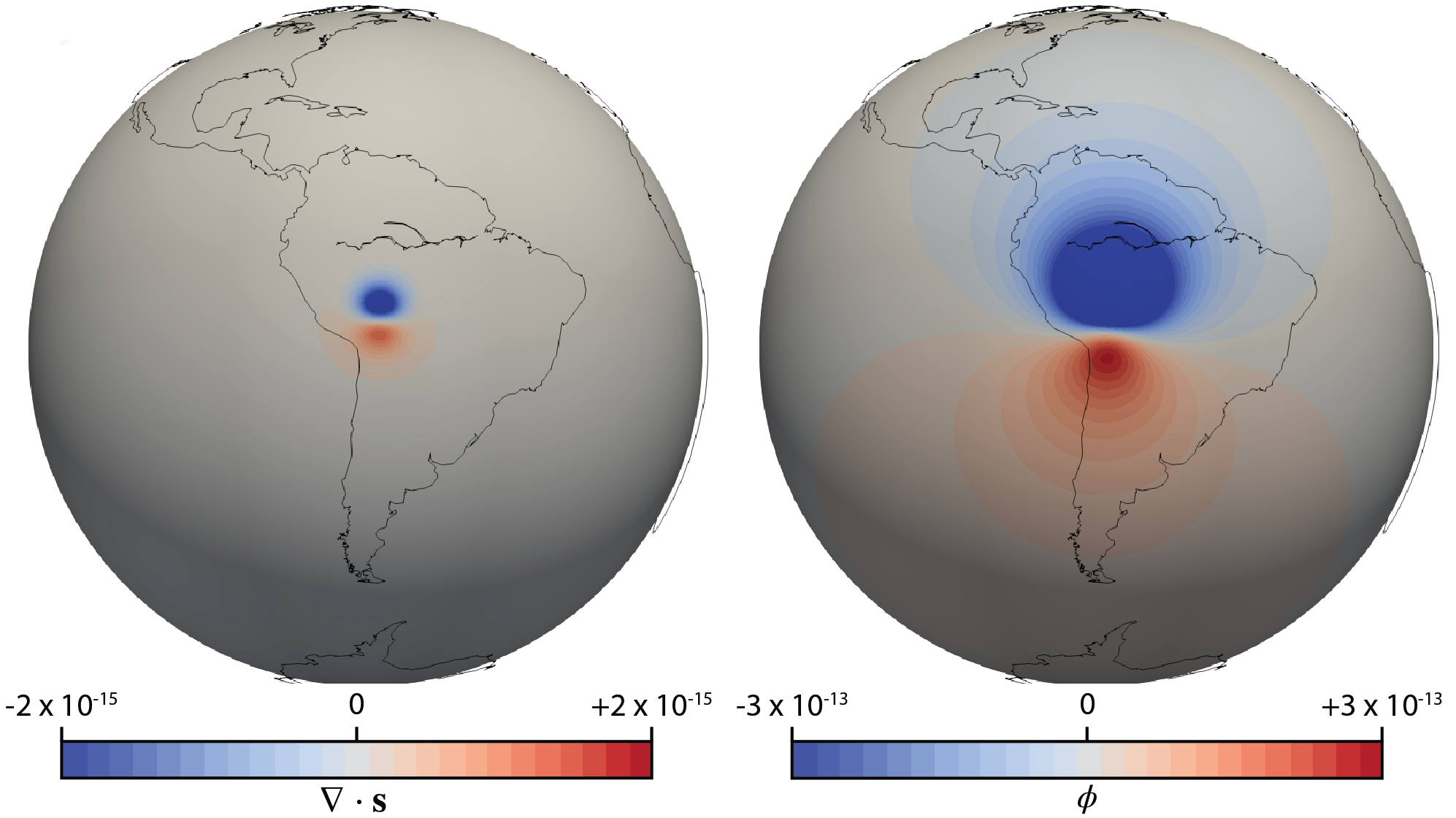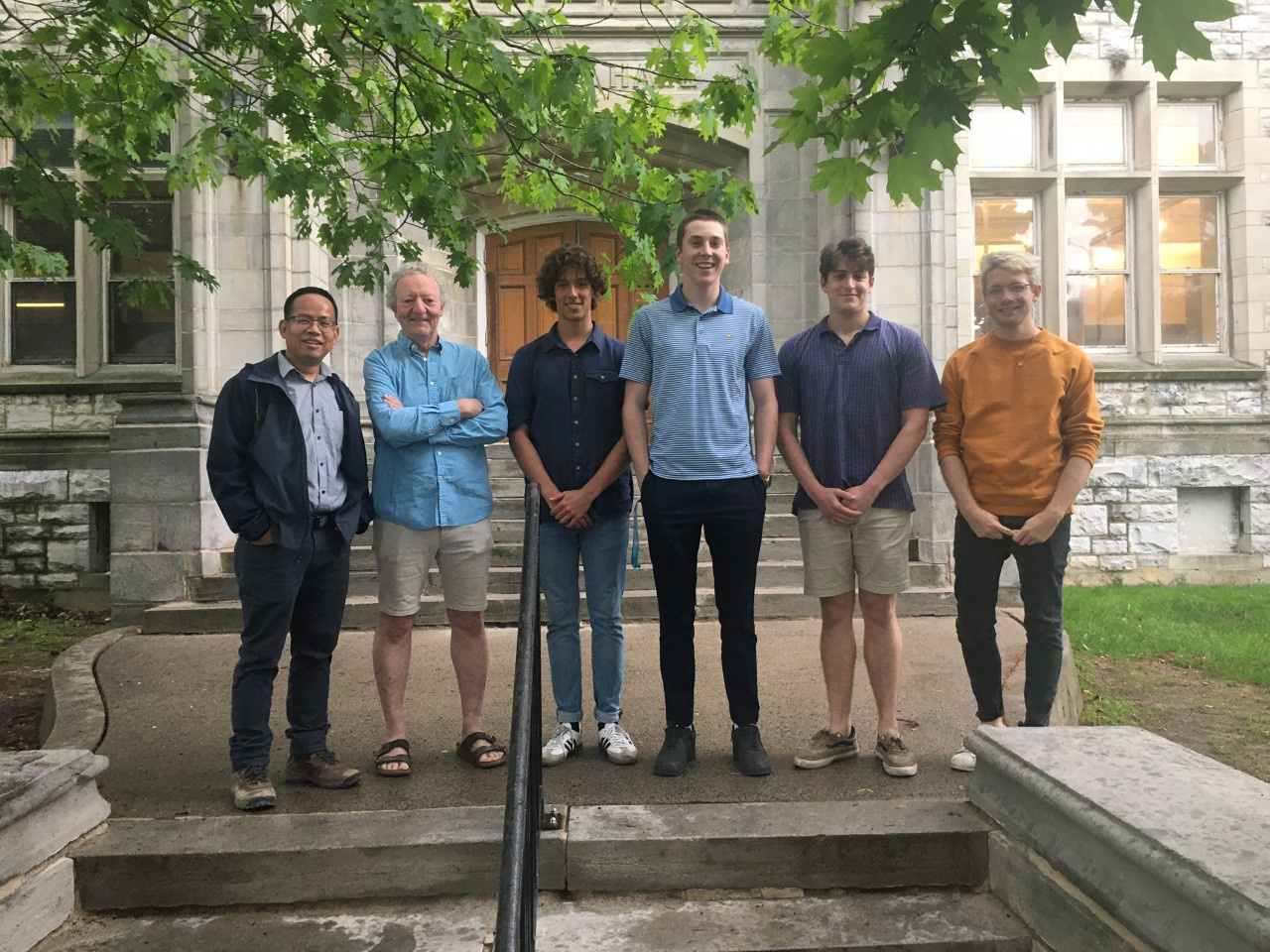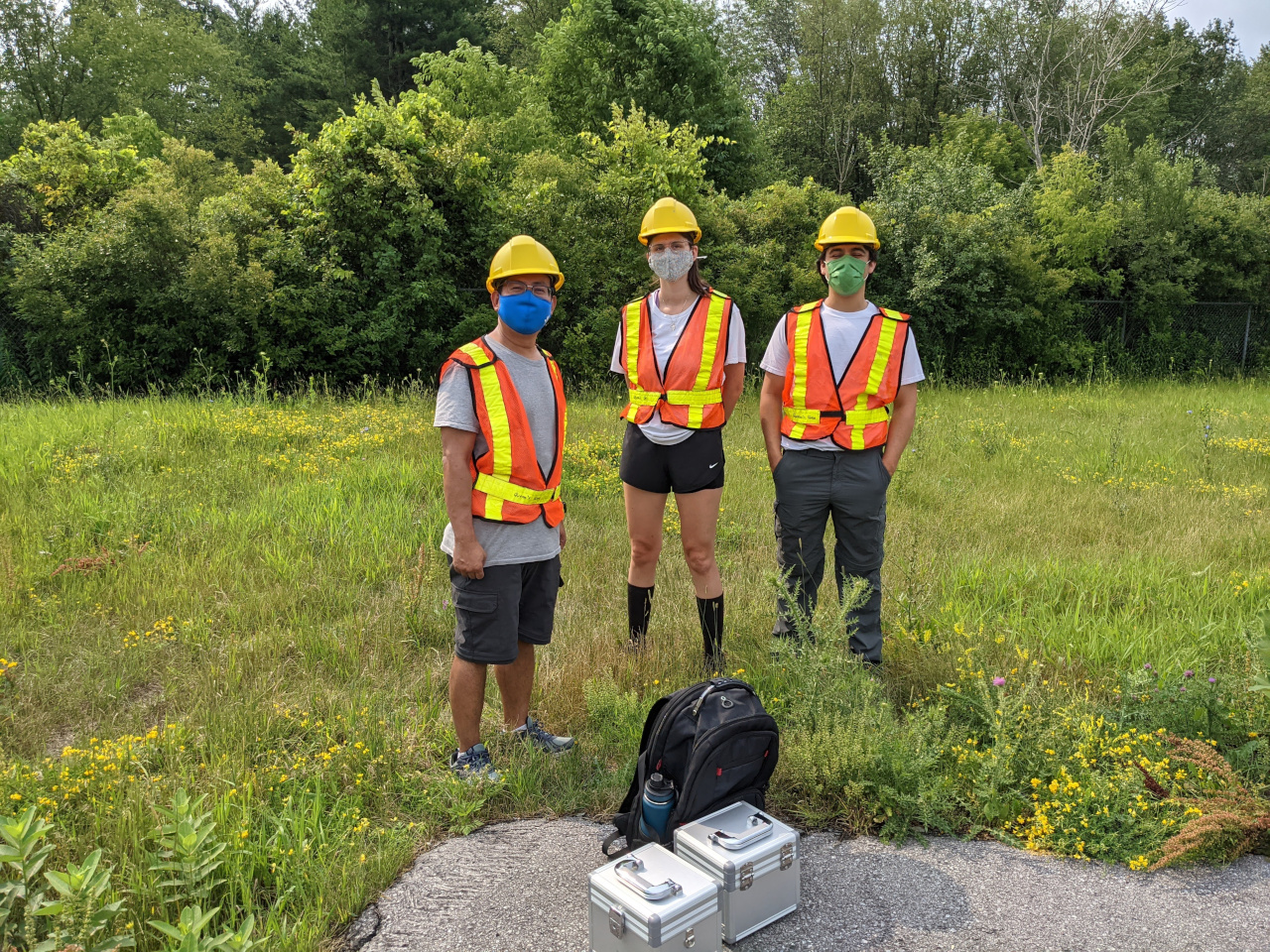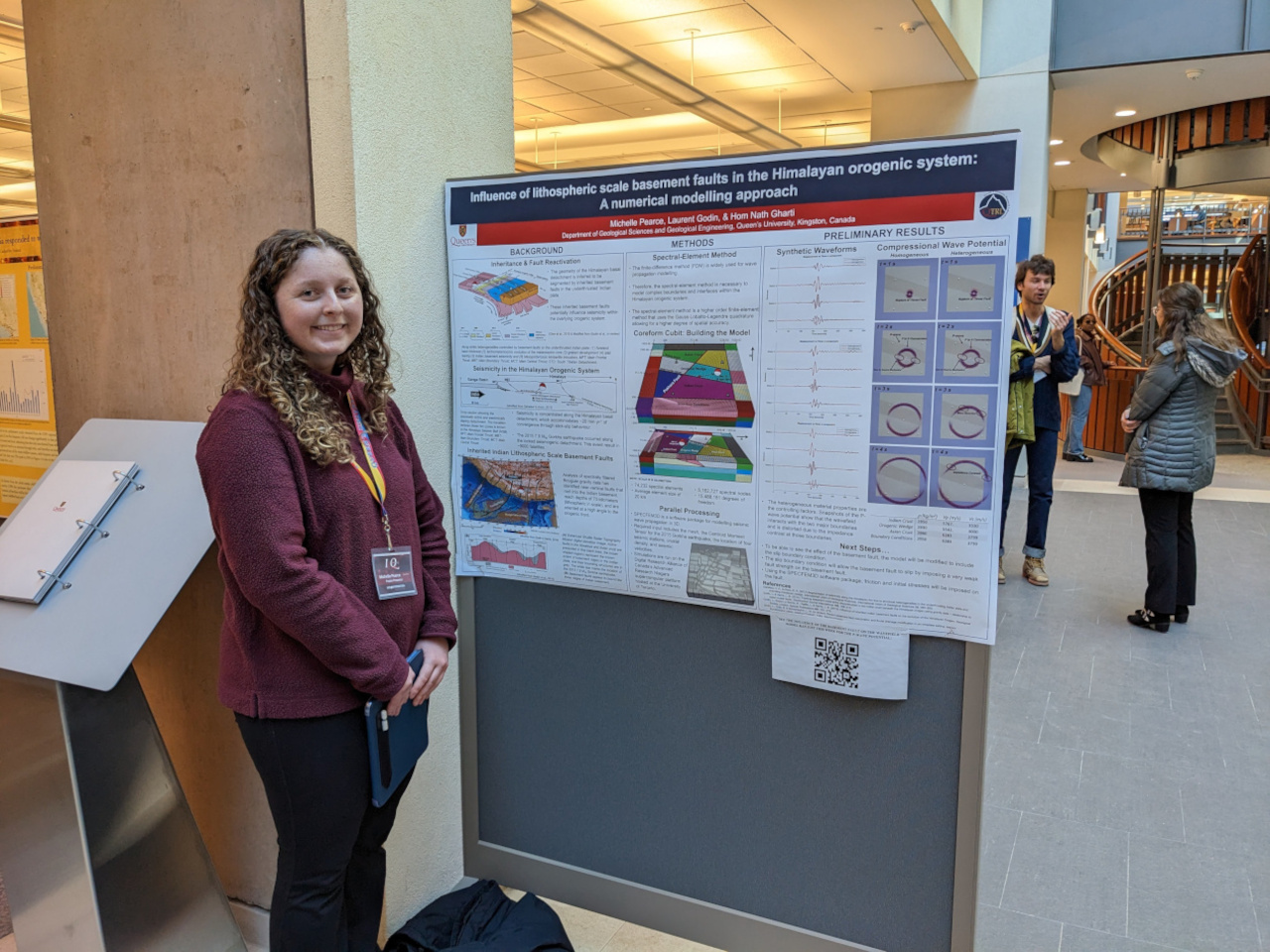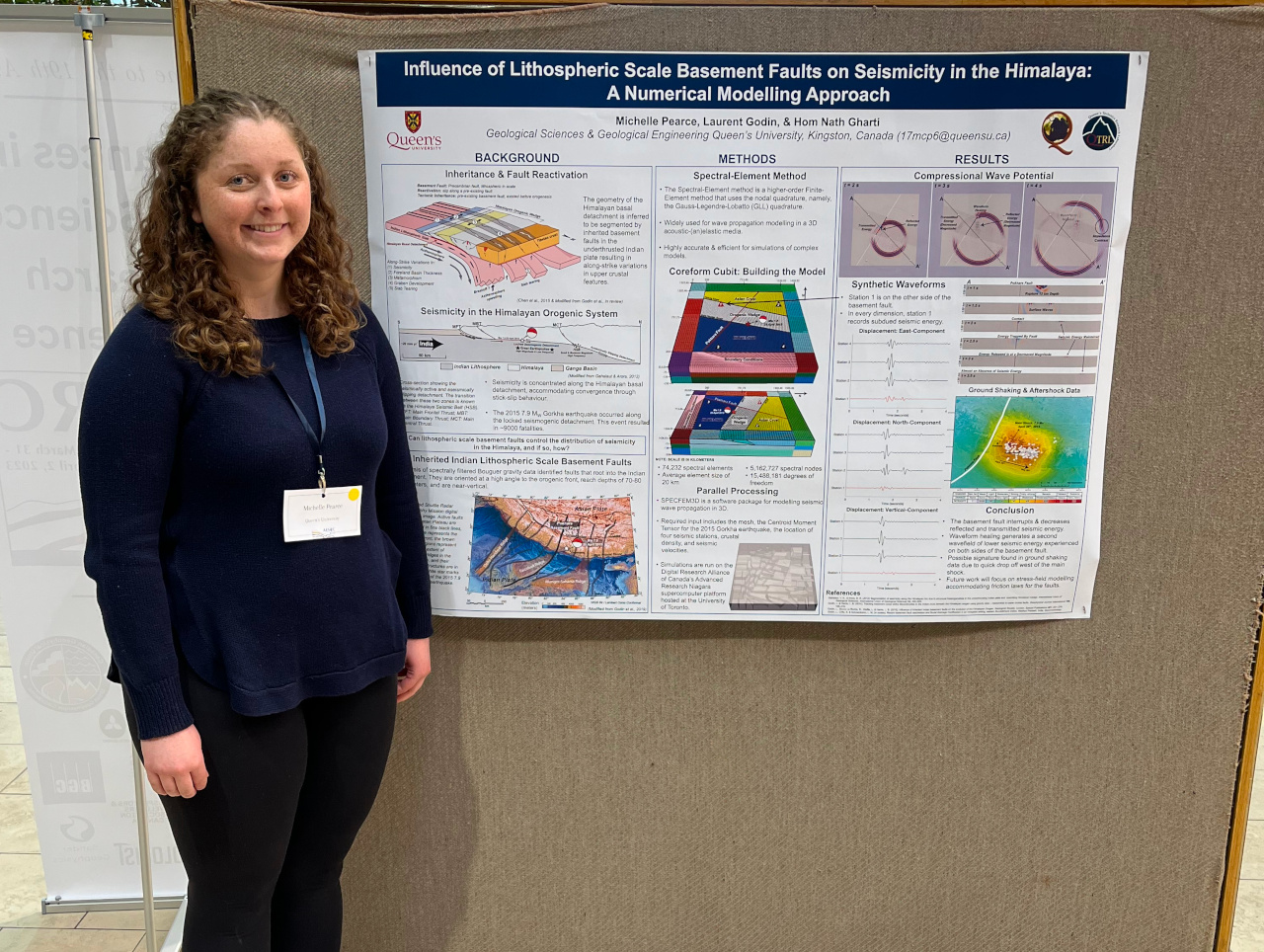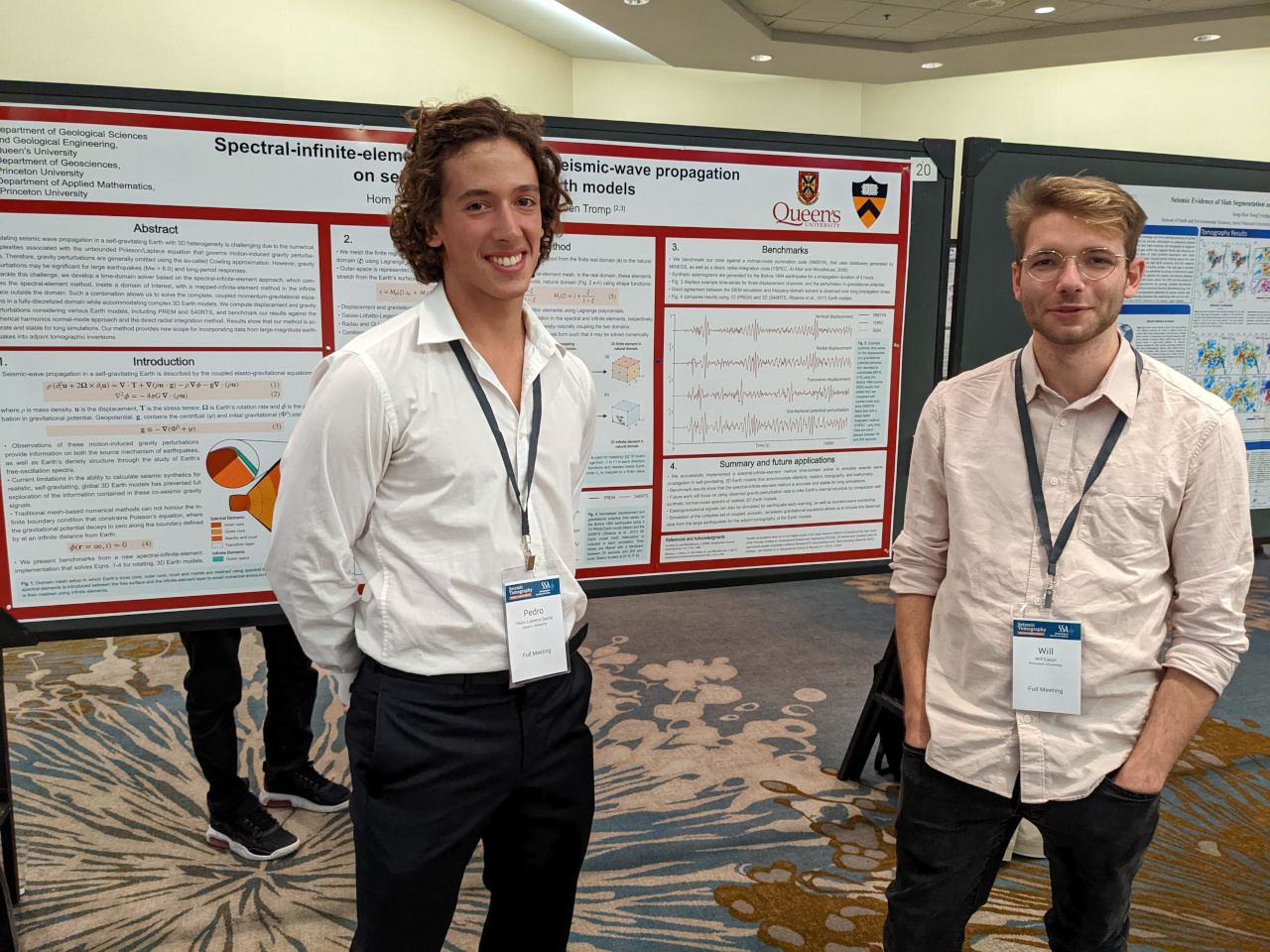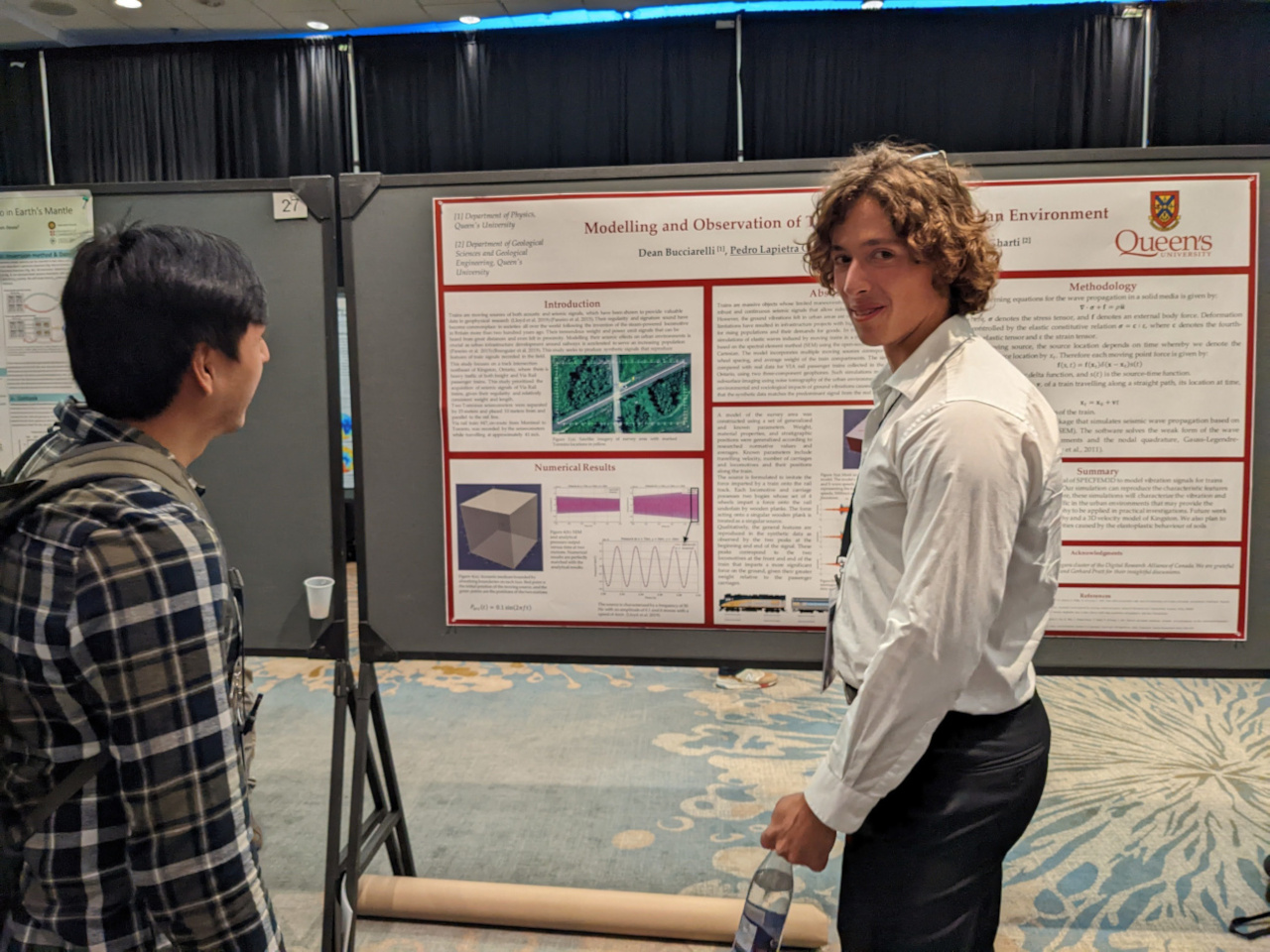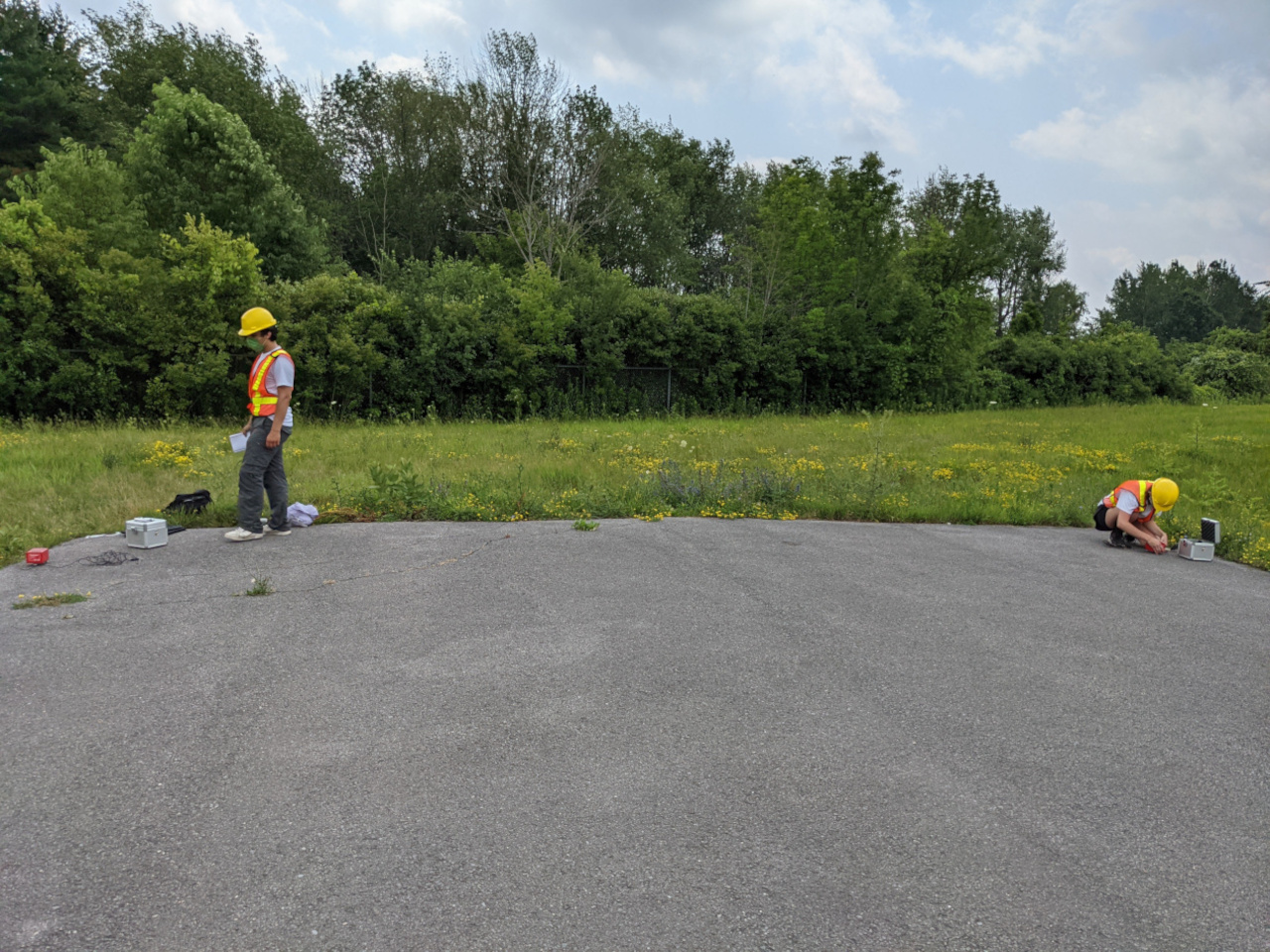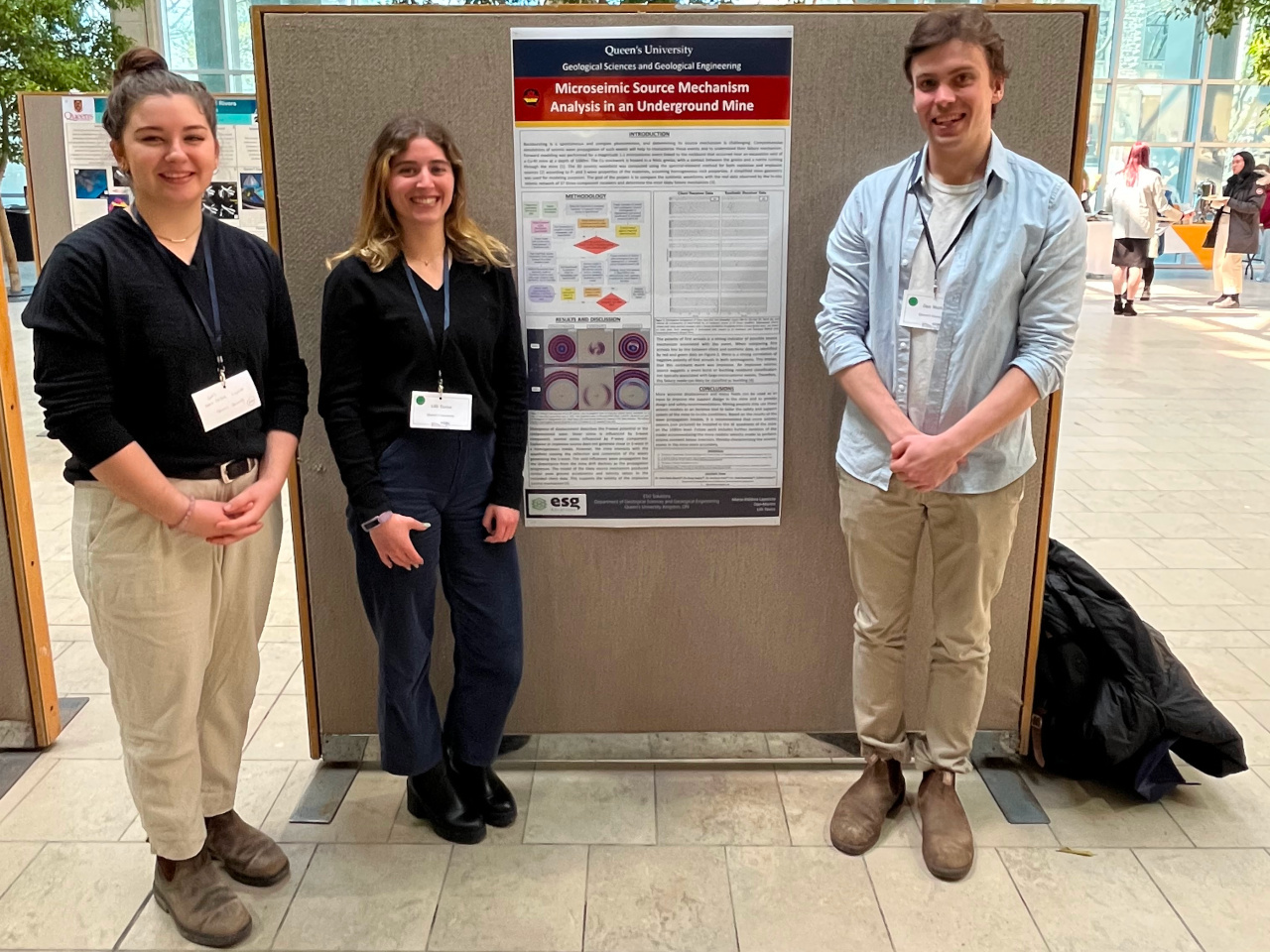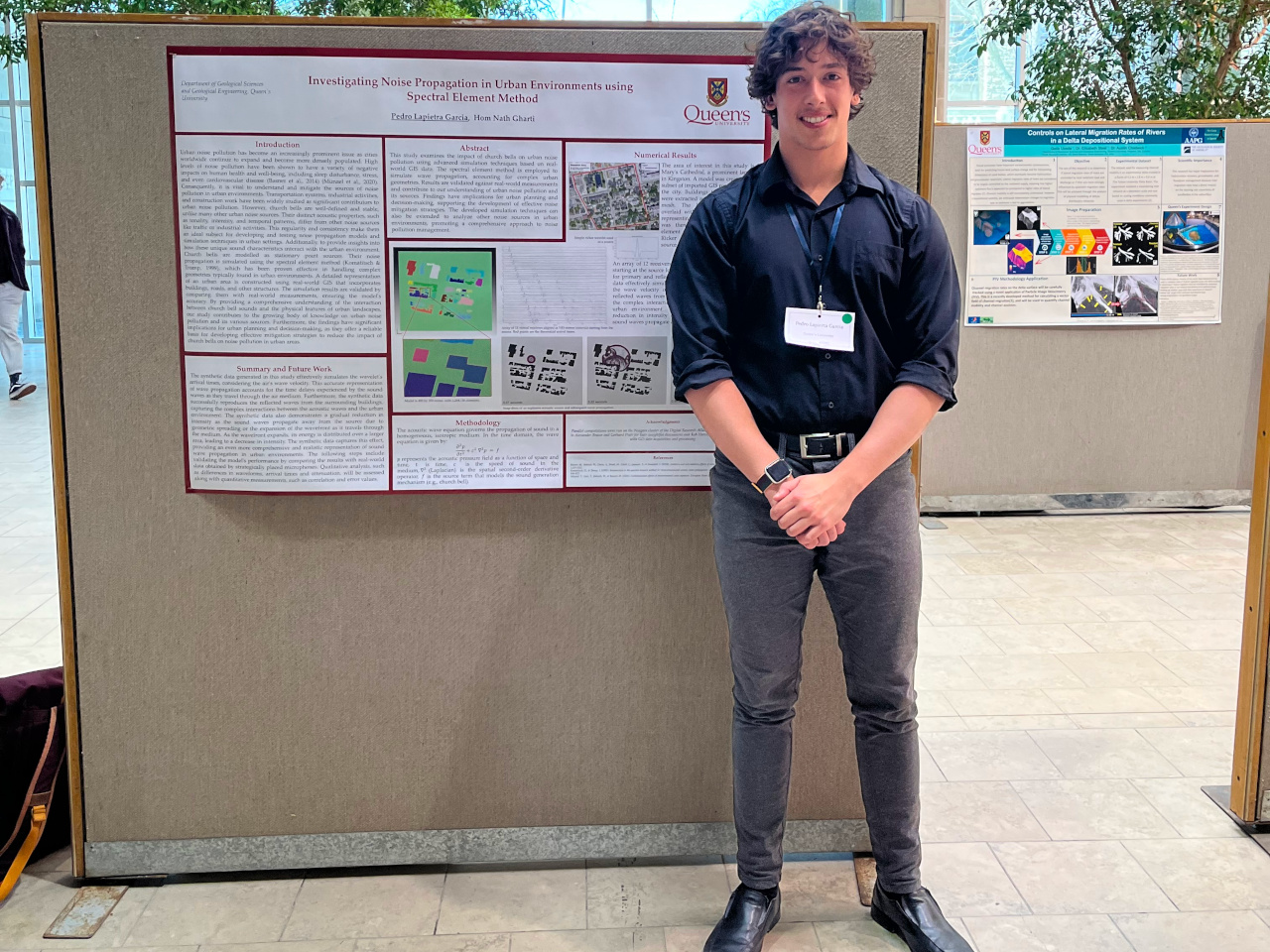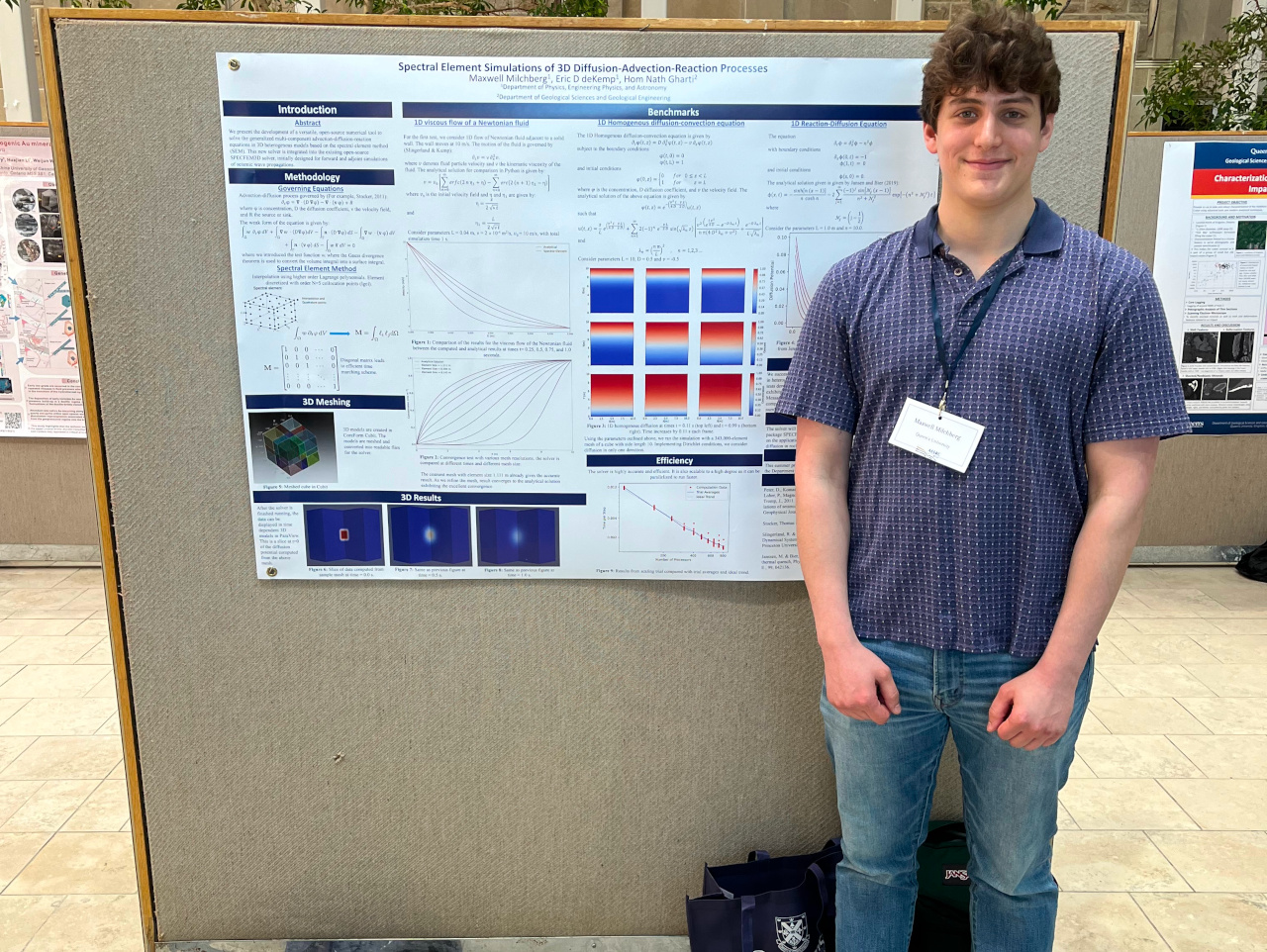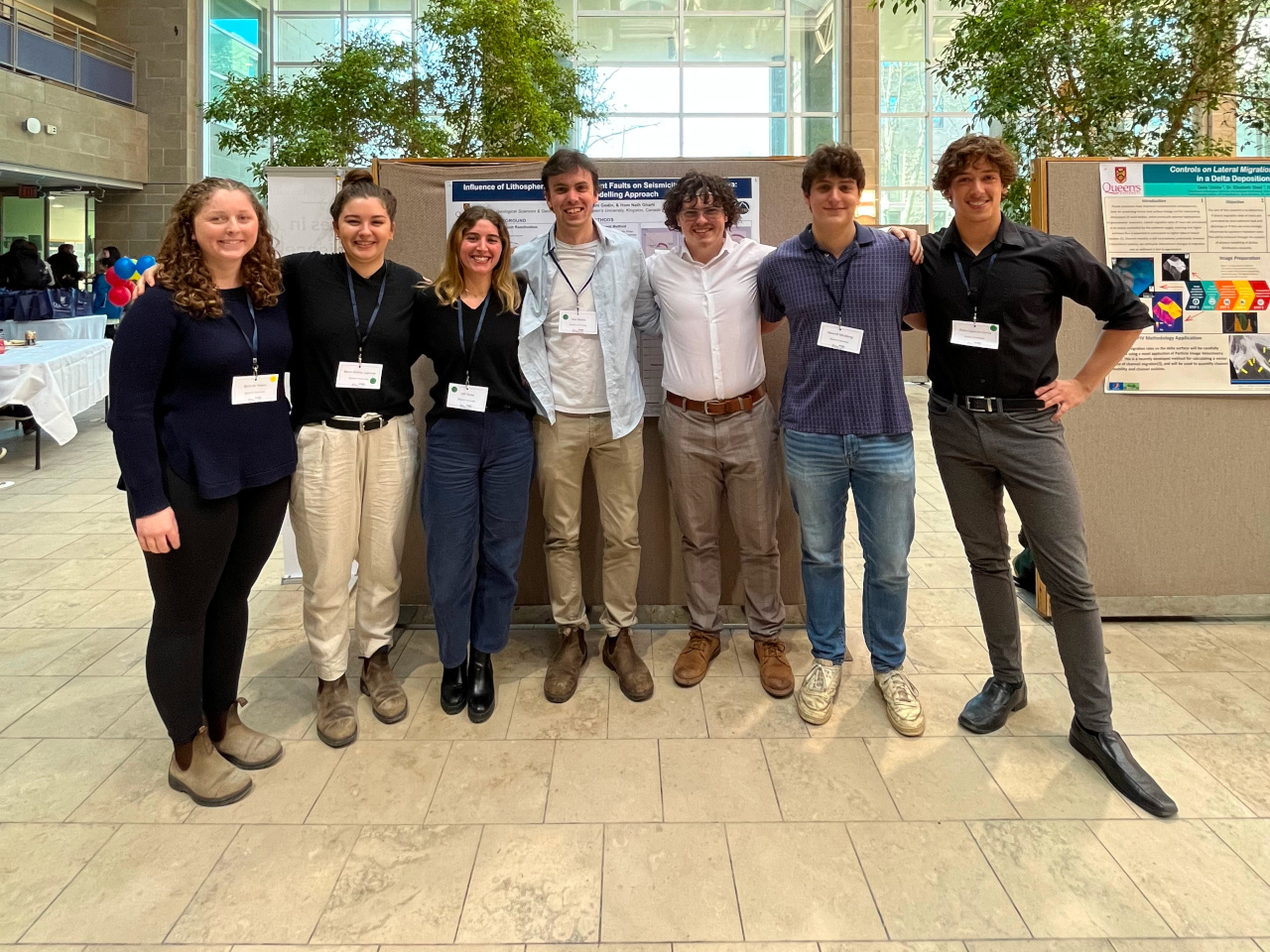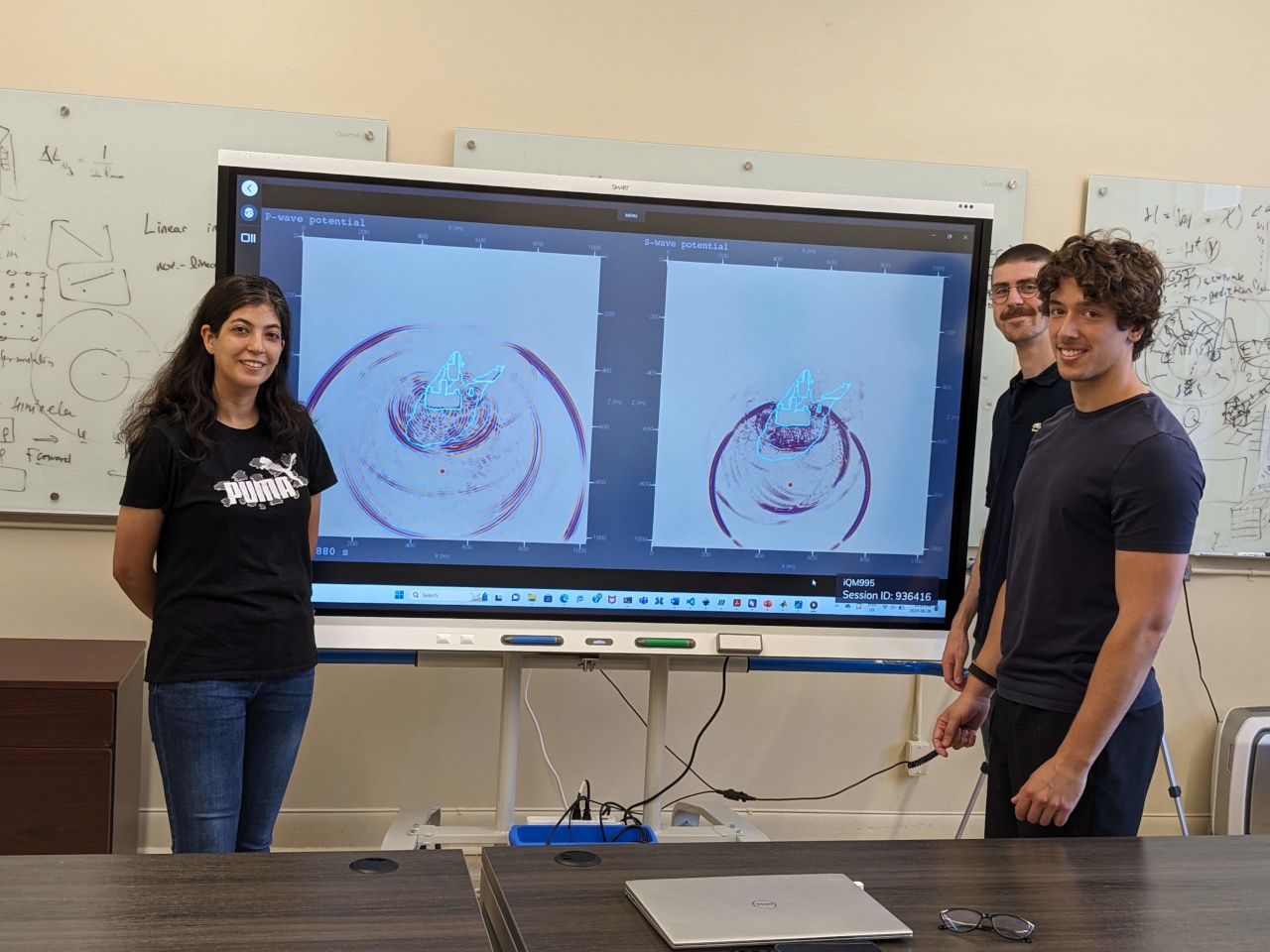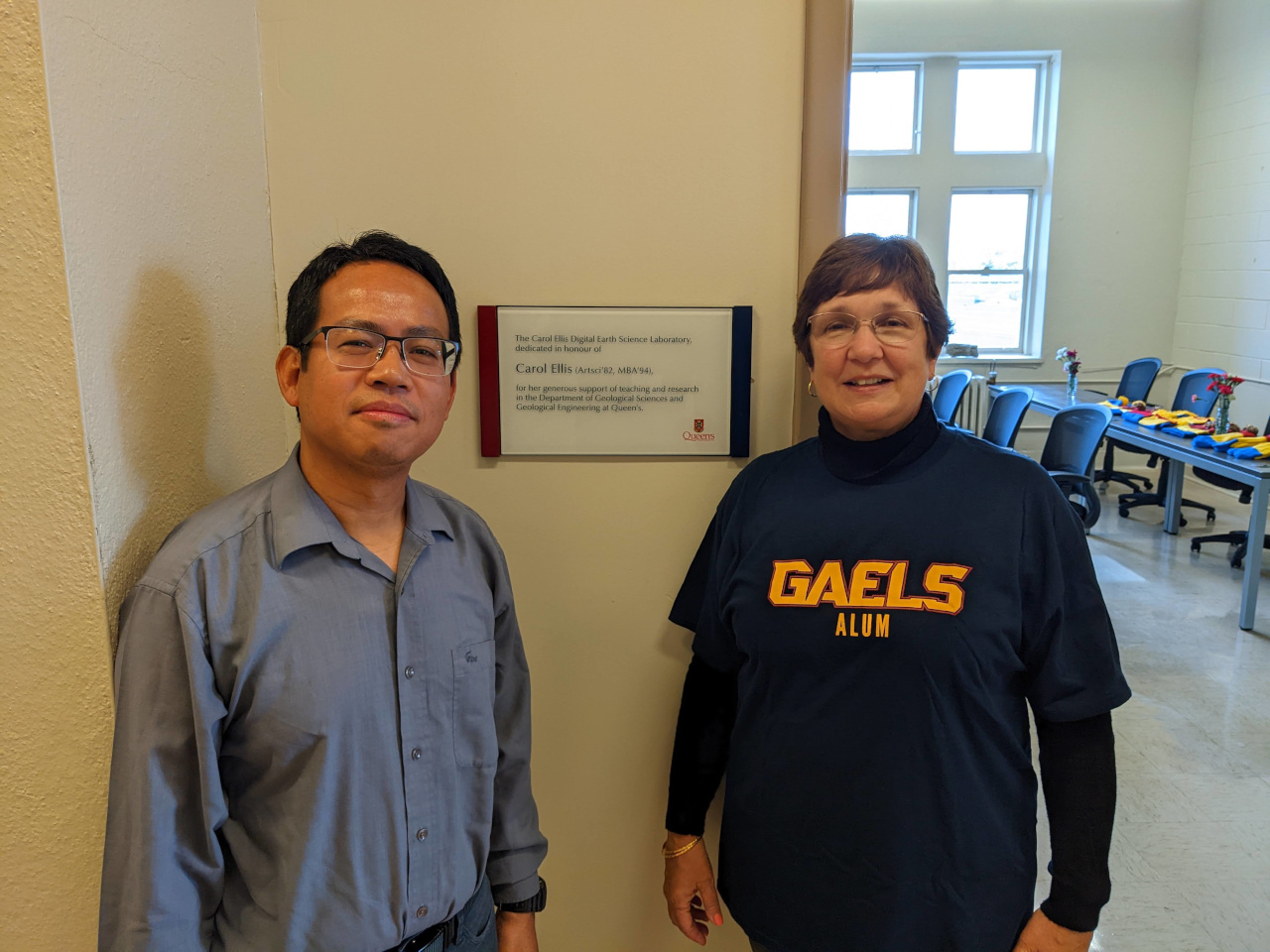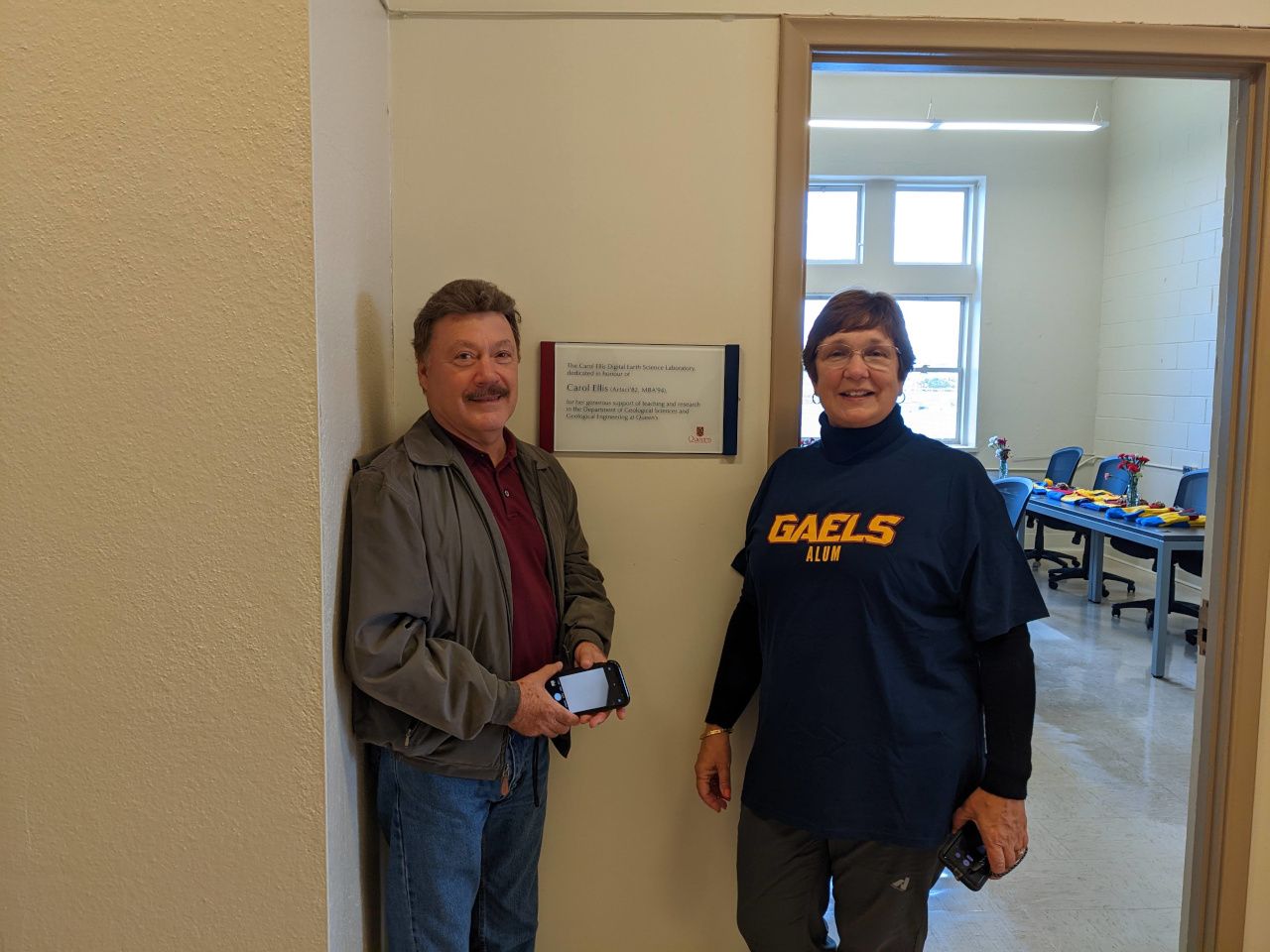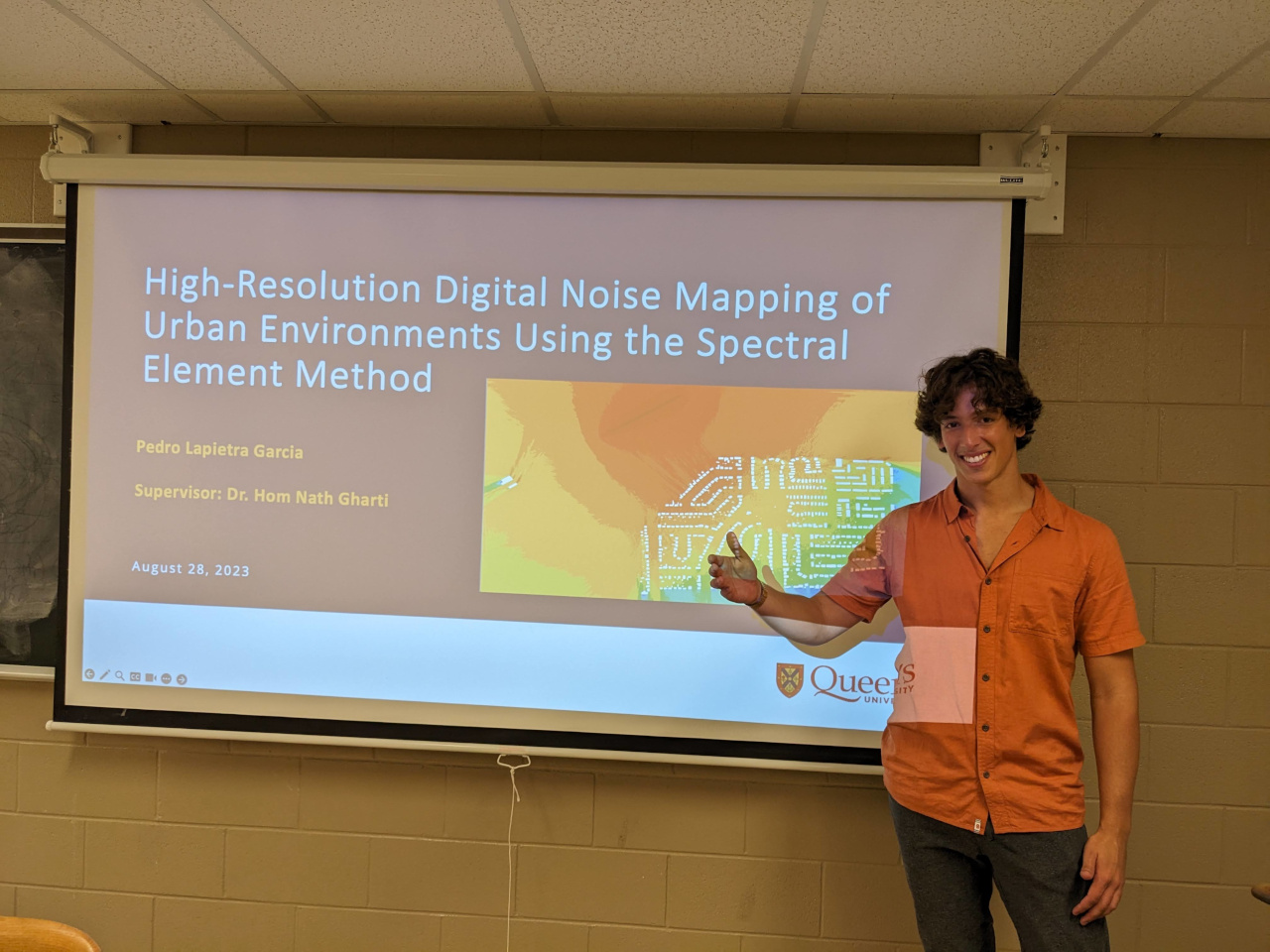About Us
Advanced Computing, Earth Science, and Beyond...
The Carol Ellis Digital Earth Science and Engineering Lab (DESEL) at Queen’s University is an interdisciplinary research group in Earth science and engineering. By harnessing the power of advanced computing, artificial intelligence (AI), and cutting-edge sensing technology, the group aims to address complex challenges related to our planet's dynamics and sustainable development.
Our primary objective is to leverage computational methods and AI algorithms to analyze and interpret vast amounts of data collected from various sources, such as satellites, remote sensing platforms, and ground-based sensors. By combining observed data with sophisticated modelling techniques, the group seeks to gain a comprehensive understanding of Earth's processes and phenomena.
Our group strongly values equity, diversity, and inclusion (EDI) and emphasizes collaboration and cross-disciplinary approaches. By working closely with experts from various fields, such as applied math, computer science, geophysics, geological engineering, and data science, the group fosters innovation and strives to push the boundaries of knowledge in Earth sciences and Engineering.

Research
Our group leverage advanced computational methods and AI algorithms to analyze and interpret vast amounts of data collected from various sources, such as satellites, remote sensing platforms, and ground-based sensors. Our research endeavours span across applied mathematics, computation, and planetary mechanics, encompassing various subjects such as (an)elastic-gravitational wave propagation, coseismic deformation and post-earthquake relaxation, glacial isostatic adjustment, gravity/magnetic anomalies, microearthquakes, as well as hexahedral meshing and scientific visualization. In order to tackle the challenges in these areas, we have (co)developed numerous software packages that provide effective solutions.
Urban Seismology
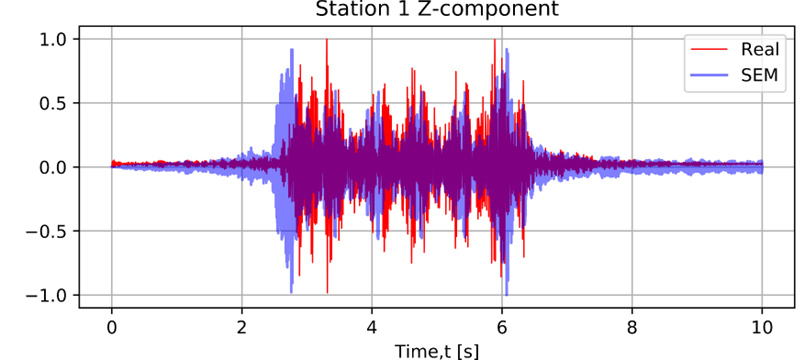
(Top) VIA rail near Kingston, Ontario, Canada. (Bottom) Observed and simulated data. Simulation was performed using SPECFEM3D.
With the rapid technological advancements, cities are transforming into smart cities. At the heart of this transformation lies the objective of leveraging breakthrough technologies to enhance safety and sustainability within urban environments. A key component of smart cities is the establishment of efficient monitoring systems that are capable of gathering significant volumes of data. This data plays a crucial role in ensuring safety and mitigating potential hazards. Presently, sensor networks play a vital role in detecting various factors, including traffic congestion, weather conditions, crowd patterns, and storm damage. However, relatively little attention has been given to exploring the subsurface of urban areas, which serves as the foundation for critical infrastructure such as bridges, trains, and traffic. These dynamic elements act as sources of vibrations, resulting in the generation of substantial amounts of data. By harnessing this data, invaluable insights can be derived regarding the subsurface of urban environments. In our endeavour, we strive to develop an automatic monitoring system that integrates advanced modelling techniques and artificial intelligence (AI) to unlock the potential of this data and enable a comprehensive understanding and management of urban subsurface dynamics.
Soundscape of Urban Environment
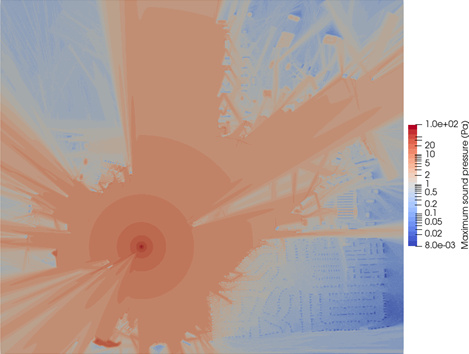
(Top) Synthetic soundscape induced by the train horn in Kingston. The red color represents the maximum sound level, and the blue color represents the minimum sound level.
Urban environments are susceptible to significant noise pollution, arising from various sources such as the construction of large infrastructures, airports, heavy traffic, and trains. While noise pollution often receives less attention compared to air pollution, its long-term impact on the environment and human health is widely recognized. Beyond being a mere annoyance, noise pollution poses substantial risks to the physical and mental well-being of residents and also negatively affects local biodiversity and ecosystems. Accurate quantification of noise pollution is crucial for assessing environmental risks and formulating effective hazard mitigation strategies.
To address this pressing issue, our aim is to develop a sophisticated high-resolution soundscape model that accurately reflects realistic urban environments. The primary focus of this project is to create a comprehensive noise pollution map of urban areas, providing vital information to both the general public and policymakers. This map will serve as a valuable resource, empowering informed decision-making and facilitating the formulation of effective strategies to mitigate noise pollution, ultimately fostering the advancement of smart cities. As part of our vision, we also plan to create a cloud-based system that enables the dissemination and near real-time interaction with these high-resolution soundscapes. This innovative system will serve as an invaluable tool for residents, governments, and policymakers, equipping them with the necessary insights to better understand and address the challenges posed by noise pollution in urban environments.
Global Seismology
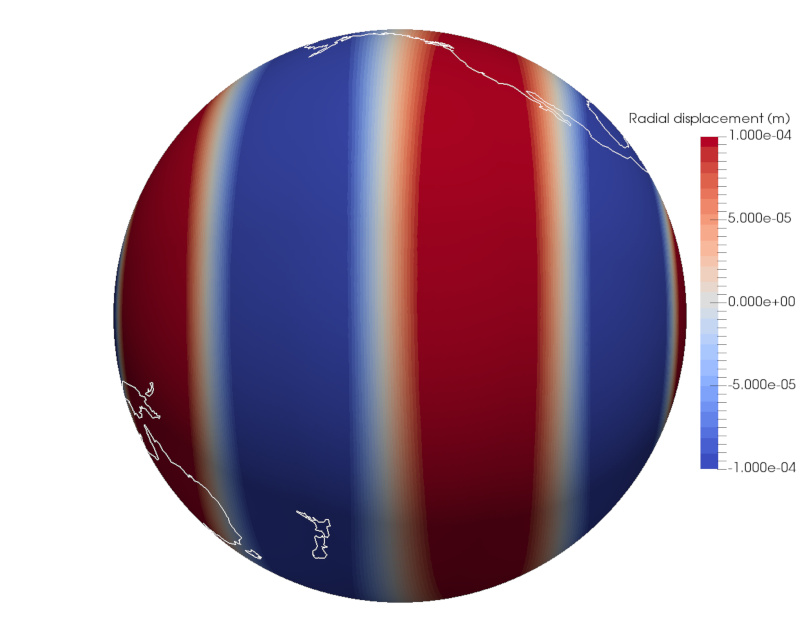
Computed 0S5 mode of the Earth excited by an Earthquake.
Our research involves solving the coupled momentum-gravitational equations in rotating 3D Earth models in both the time and frequency domains. Solving the coupled momentum-gravitational equations in 3D models is challenging due to the numerical complexities associated with the unbounded Poisson/Laplace equation that governs gravity perturbations. To overcome this challenge, we have developed a spectral-finite-element approach that combines the spectral-element method with the mapped infinite-element approach. This innovative solver will enable us to address a range of challenges in global geomechanics, such as gravity perturbation, coseismic and postseismic deformation, glacial isostatic adjustment, and long-period seismology.
Multipurpose Advection-Diffusion-Reaction Solver
The advection-diffusion-reaction equation has diverse applications across multiple disciplines. In environmental science, it is used to model air pollution, the migration of contaminants in groundwater, and the spread of wildfire. In medicine, it is used to model tumor growth and invasion. In geoscience, it is used to study geothermal heat flow and the formation of rocks due to mineral diffusion and reaction. Similarly, it is also used to model epidemic dynamics and information spreading in society. Despite widespread applications, tools to solve this equation are scattered across different disciplines with very specific applications. In addition, simulations of the advection-diffusion-reaction equation, particularly in 3D complex heterogeneous media, are scarce. The main objective of the project is to develop an AI-enabled integrated modelling framework for multicomponent advection-diffusion-reaction equation for 3D complex heterogeneous media to address diverse problem domains, including groundwater pollution, wildfire, tumor growth, and information diffusion, to name a few. Our unified framework will be scale-independent, and provide a certain degree of automation and adaptability enabled by artificial intelligence. The proposed project will build upon our long experience with developing open-source software and recent work on the multicomponent advection-diffusion-reaction solver.
Spectral-Element Solution of Potential Field Problems
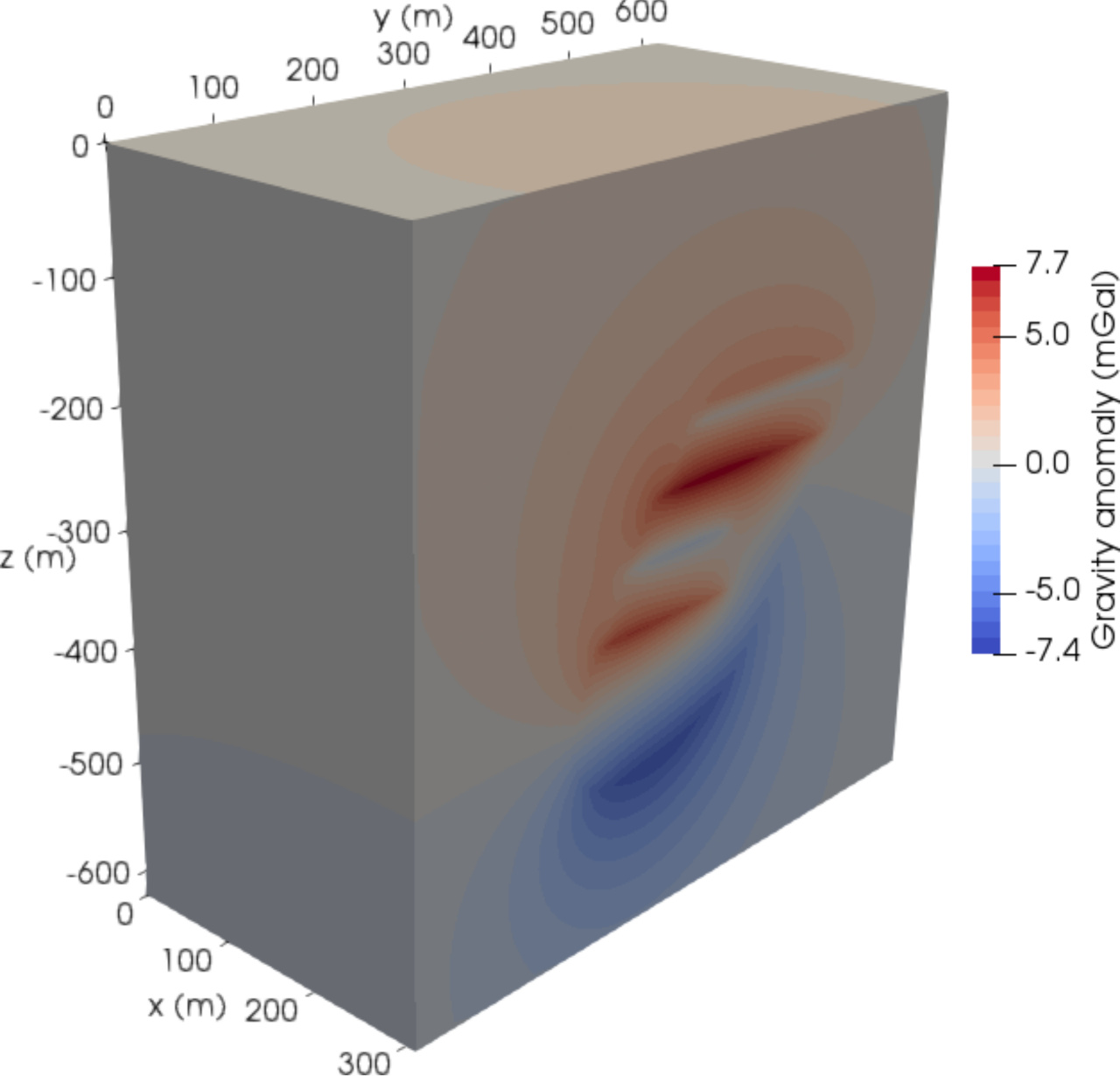
Computed gravity anomalies in a complex underground ore mine.
We have successfully developed an efficient numerical tool that utilizes the spectral-element method to solve potential field problems in 3D models. Unlike the direct integral solution method, our approach offers the advantage of computational cost independence from the number of observation points. This is achieved by solving the weak form of Poisson's equation that governs the potential field. Through this innovative approach, we are able to significantly enhance the computational efficiency and accuracy of solving potential field problems in 3D models.
Geotechnical Engineering Applications
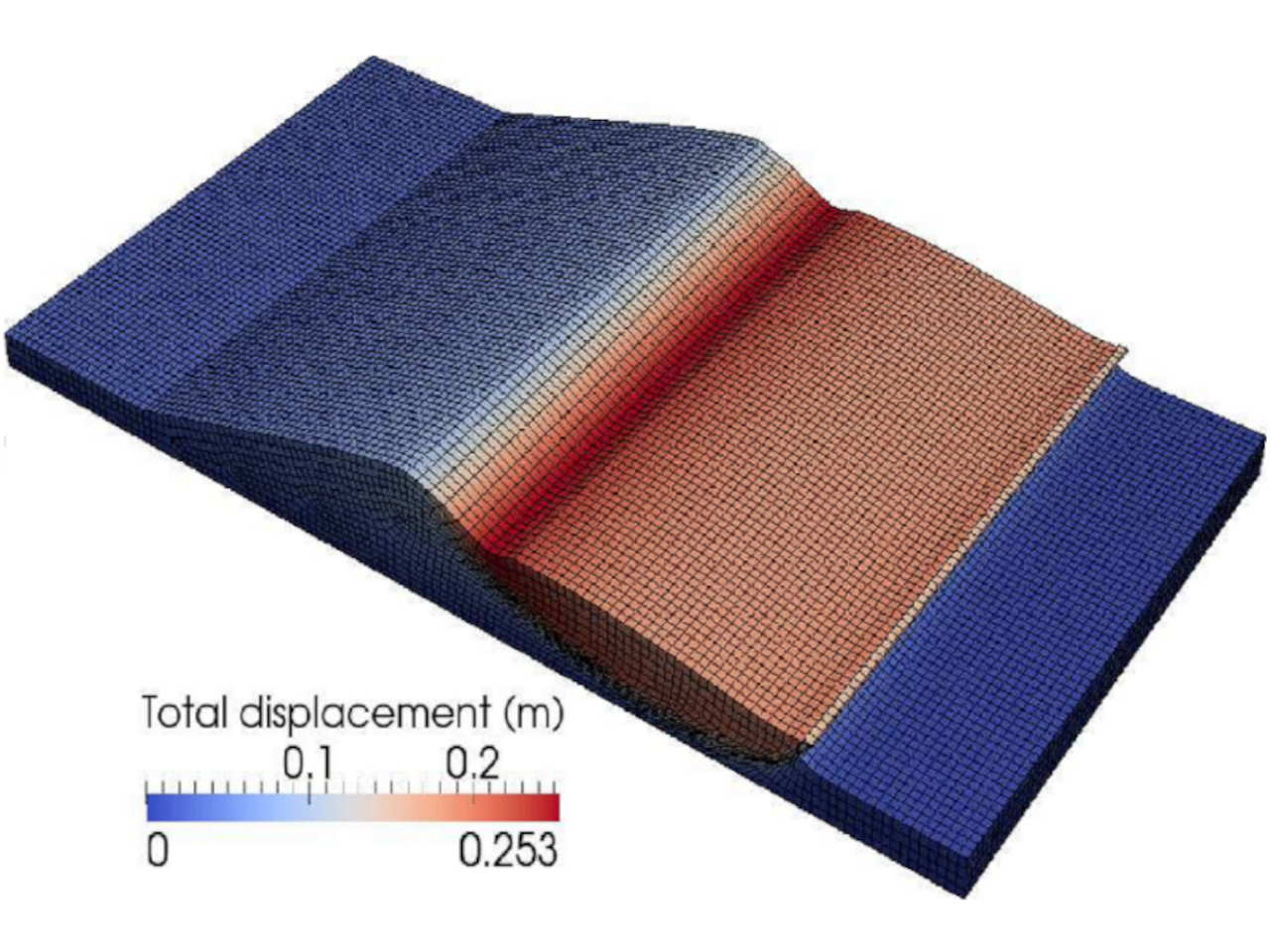
Simulated failure of an earth emabankment.
We have developed an open-source software package SPECFEM3D GEOTECH based on the spectral-element method, specifically designed to tackle geotechnical engineering problems such as multistage excavation and slope stability. The software employs nonlinear solver accomodating elastoplasticity. It can incorpoate complex topography, water table and heterogeneities.
Teaching
We embrace the Universal Design for Learning (UDL) guidelines, integrating them into our teaching approach to promote inclusivity and responsiveness. Our foremost objective is to establish an environment that caters to the diverse needs and learning styles of all students. We hold a strong conviction in seamlessly blending our ongoing research endeavors with the teaching process, enabling students to derive benefits from the most recent developments and advancements in the field. Through these efforts, we are dedicated to fostering an engaging and enriching learning experience for all our students.
GEOE/GEOL 249/269 / GEOE 249: Geophysical Characterization of the Earth
Undergraduate CourseIn this course, we delve into applying physical principles to investigate and characterize the Earth across various scales. We explore the Earth's dynamic processes and examine its physical properties by integrating geophysical fields such as gravity, seismology, magnetism, geochronology, and heat flow. Through this integration, we aim to address scientific and engineering problems related to the Earth. The primary objective of this course is to enable students to revisit essential mathematical and physics skills and learn how to apply them to geological challenges at different scales. By doing so, they will develop a robust understanding of the scientific methodologies employed throughout history to study the Earth and gain insight into the current state of Earth's knowledge as a planetary entity. Furthermore, this course also addresses the complexities associated with incomplete geological information and the intricate nature of geological time.
Computation and Machine Learning in Geosciences Through Music
Principal Impact CourseWith the rapid advance of computing technology, computation and machine learning have become indispensable tools in many fields, including geosciences, physics, engineering, biology, and medical science. This principal impact course is an interdisciplinary course that combines the beauty of music with the power of advanced computation and machine learning to inspire next-generation scientists and engineers to tackle a vast array of problems in geosciences and related fields. Unlike most music-aided courses, we will collect, compute, and analyze musical or sound data, both instrumental and natural, and apply the approach to solve real-world problems in geosciences. Although the course syllabus will be within the geoscience framework, the skill and knowledge developed during this course will be applicable to a wide range of real-world problems in various fields.
Computational Geosciences
Graduate CourseIn this course, we will explore commonly used computational methods, namely, finite-difference method, pseudo-spectral method, finite-element method, and spectral-element method applied to problems in geosciences. Specifically, we will solve wave propagation, tsunami problem, steady-state, and unsteady-state heat diffusion equations. We will start from 1D examples and gradually expand to 2D and 3D examples. All examples will be supplemented by programming exercises. We will provide program templates for most exercises in Matlab or C, or FORTRAN. Students are welcome to use any language of their choice. At the end of the course, students will be able to design and solve their own problems in computational geosciences. Additionally, students will be able to make informed decisions on using geoscientific software rather than simply using them as black boxes.
Forward and Inverse Problems in Geosciences
Graduate CourseIn this course, we will explore both forward and inverse modelling related to geoscientific problems. The forward and inverse modellings are complementary. They are powerful tools to tackle complex and challenging problems in geosciences and related fields. In the forward modelling, we will simulate the response of the known model properties for prescribed sources and produce synthetic data. Inverse modelling is more powerful because we can use the observed data to estimate the model and source properties. Unfortunately, this process is not unique and is generally more complex. We will also explore these complexities associated with inverse modelling. In this course, we will solve a wide range of geoscience problems, including wave propagation, seismic source inversion, travel time tomography, forward and inverse gravity and magnetic anomalies modelling. Later in the course, we will also discuss full waveform tomography. We will use the finite-difference method, spectral-element method, and direct integral method for the forward solver. All examples will be supplemented by programming exercises. We will provide program templates for most exercises in Matlab or Python.
Publications
Recent Articles And Presentations
- Gharti, H. N., Eaton, W., and Tromp, J., 2023. Spectral-infinite-element simulations of seismic wave propagation in self-gravitating, rotating 3D Earth models,
Geophysical Journal International. DOI:https://doi.org/10.1093/gji/ggad382 - Sawade, L., Ding, L, Peter, D., Gharti, H. N., Liu, Q., Nettles, M., Ekström, G., and Tromp, J., 2023. A preliminary green function database for global 3-D centroid moment tensor inversions,
The EGU23 General Assembly, Vienna, Austria. - Wells, R. and Gharti, H. N., 2023. Modelling ground water pollution using the spectral element method,
Advances in Earth Sciences Research Conference (AESRC) 2023, Kingston, Ontario, Canada. - Pearce, M., Godin, L., and Gharti, H. N., 2023. Influence of lithospheric scale basement faults on seismicity in the Himalayan orogenic system: A numerical modelling approach,
Advances in Earth Sciences Research Conference (AESRC) 2023, Kingston, Ontario, Canada. - Milchberg, M., deKemp, E., and Gharti, H. N., 2023. Spectral-element simulations of 3D advection-diffusion-reaction processes in complex geological models,
Advances in Earth Sciences Research Conference (AESRC) 2023, Kingston, Ontario, Canada. - Garcia, P. L. and Gharti, H. N., 2023. Modelling noise propagation in urban environments generated by trains and church bells using the spectral element method,
Advances in Earth Sciences Research Conference (AESRC) 2023, Kingston, Ontario, Canada. - Damavandi, K. and Gharti, H. N., 2023. Spectral-infinite-element simulations of induced polarization anomalies,
Advances in Earth Sciences Research Conference (AESRC) 2023, Kingston, Ontario, Canada. - Lapointe, M.-H., Tavis, L., and Martin, M., 2023. Simulations of implosion and explosion in an underground mine using the spectral-element method,
Advances in Earth Sciences Research Conference (AESRC) 2023, Kingston, Ontario, Canada.
Peer-Reviewed Articles
- He, J., Rao, J., Fleming, J. D., Gharti, H. N., Nguyen, L. T., and Morrison, G., 2021. Numerical ultrasonic full waveform inversion (FWI) for complex structures in coupled 2D solid/fluid media,
Smart Materials and Structures, 30(8), 085044. DOI:10.1088/1361-665x/ac0f44 - Jeong, C., Manalaysay, A.,Gharti, H. N., Guan, S., and Vignola, J., 2019. Applicability of 3D spectral element method for computing close-range underwater piling noises,
Journal of Theoretical and Computational Acoustics. DOI:10.1142/S2591728519500129. - Gharti, H. N. and Tromp, J., 2019. Spectral-infinite-element simulations of magnetic anomalies,
Geophysical Journal International, 217, 1656-1667. DOI:10.1093/gji/ggz107. - Langer, L., Gharti, H. N., and Tromp, J., 2019. Impact of topography and three-dimensional heterogeneity on coseismic deformation,
Geophysical Journal International, 217, 866-878. DOI:10.1093/gji/ggz060. - Gharti, H. N., Langer, L., and Tromp, J., 2019. Spectral-infinite-element simulations of earthquake-induced gravity perturbations,
Geophysical Journal International, 217, 451-468. DOI:10.1093/gji/ggz028. - Vaaland, U. B., Gharti, H. N., and Tromp, J., 2019. Simulations of seismic wave propagation using a spectral-element method in a Lagrangian framework with logarithmic strain,
Geophysical Journal International, 216, 2148-2157. DOI:10.1093/gji/ggy546. - Wang, N., Li, J., Borisov, D., Gharti, H. N., Shen, Y., Zhang, W., and Savage, B., 2019. Modeling three-dimensional wave propagation in anelastic models with surface topography by the optimal strong stability preserving Runge-Kutta method,
Journal of Geophysical Research - Solid Earth, 124. DOI:10.1029/2018JB016175. - Gharti, H. N., Langer, L., and Tromp, J., 2019. Spectral-infinite-element simulations of coseismic and post-earthquake deformation,
Geophysical Journal International, 216, 1364-1393. DOI:10.1093/gji/ggy495. - Gharti, H. N., Tromp, J., and Zampini, S, 2018. Spectral-infinite-element simulations of gravity anomalies,
Geophysical Journal International, 215, 1098-1117. DOI:10.1093/gji/ggy324. - Lloyd, S. F., Jeong, C., Gharti, H. N., Vignola, J., and Tromp, J., 2018. Spectral-element simulations of acoustic waves induced by a moving underwater source,
Journal of Theoretical and Computational Acoustics. DOI:10.1142/S2591728518500408. - Paap, B., Kraaijpoel, D., Bakker, M., and Gharti, H. N., 2018. Wave propagation modelling of induced earthquakes at the Groningen gas production site,
Geophysical Journal International, 214, 1947-1960. DOI:10.1093/gji/ggy225. - Lecomte, I., Lubrano-Lavadera, P., Wuestefeld, A., Kaschwich, T., Albaric, J., and Gharti, H. N., 2015. Focusing in migration-based location of weak microseismicity: modelling point-spread function for resolution analyses,
SEG Technical Program Expanded Abstracts, 2491-2495. DOI:10.1190/segam2015-5813282.1. - Gharti, H. N., Oye, V., Komatitsch, D., and Tromp, J., 2012. Simulation of multistage excavation based on a 3D spectral-element method,
Computers & Structures, 100–101, 54–69. DOI:10.1016/j.compstruc.2012.03.005. - Gharti, H. N., Komatitsch, D., Oye, V., Martin, R., and Tromp, J., 2012. Application of an elastoplastic spectral- element method to 3D slope stability analysis,
International Journal for Numerical Methods in Engineering, 91, 1–26. DOI:10.1002/nme.3374. - Gharti, H. N., Oye, V., Kühn, D., and Zhao, P., 2011. Simultaneous microearthquake location and moment-tensor estimation using time-reversal imaging,
SEG Technical Program Expanded Abstracts, 30, 1632-1637. DOI:10.1190/1.3627516. - Gharti, H. N., Oye, V., Roth, M., and Kühn, D., 2010. Automated microearthquake location using envelope stacking and robust global optimization,
Geophysics, 75, MA27-MA46. DOI:10.1190/1.3432784. - Oye, V.,Gharti, H. N., Aker, E., and Kühn, D., 2010. Moment tensor analysis and comparison of acoustic emission data with synthetic data from spectral element method,
SEG Technical Program Expanded Abstracts,29(1):2105–9. DOI:10.1190/1.3513260. - Kühn, D., Gharti, H. N., Oye, V., and Roth, M., 2009, Analysis of mining-induced seismicity using focal mechanism and waveform computations in heterogeneous media.
EAGE extended abstracts, Amsterdam. DOI:10.3997/2214-4609.201400028. - Gharti, H. N., Oye, V., and Roth, M., 2008. Travel times and waveforms of microseismic data in heterogeneous media,
SEG Tech Prog Expanded Abstracts, 27(1):1337–41. DOI:10.1190/1.3059162.
Other Articles
- Gharti, H. N., Komatitsch, D., Langer, L., Martin, R., Oye, V., Tromp, J., Vaaland, U., and Yan, Z., 2017. SPECFEM 3D Geotech: an open-source, parallel and cross-platform geotechnical engineering application (Version v1.2.0),
Zenodo. DOI:10.5281/zenodo.820154. - Gharti, H. N., Langer, L., Roth, M., Tromp, J., Vaaland, U., and Yan, Z., 2017. MeshAssist: an open-source and cross-platform meshing assistant tool,
Zenodo. DOI:10.5281/zenodo.883448. - Gharti, H. N., and Tromp, J., 2017. A spectral-infinite-element solution of Poisson’s equation: an application to self gravity.
arXiv:1706.00855. - Gharti, H. N., Oye, V., Roth, M., and Kühn, D., 2017. Wave propagation modelling in various microearthquake environments using a spectral-element method.
arXiv:1706.05217.
Presentations
- Eaton, W., Gharti, H. N., and Tromp, J., 2022. Seismic wave propagation in self-gravitating Earth models with 3D heterogeneity. AGU Fall Meeting 2022, Chicago, United States
- Gharti, H. N., Milchberg, M., and deKemp, E. D., 2022. Spectral-element simulations of 3D multicomponent advection-diffusion-reaction processes. AGU Fall Meeting 2022, Chicago, United States
- Gharti, H. N., 2022. Meshing the whale skeleton. Whale Day Conference, Queen's University.
- Gharti, H. N., 2022. Computing dynamic earthquake-induced gravity perturbations. Geo-Colloquium, Queen's University.
- Gharti, H. N., Eaton, W., and Tromp, J., 2022. Spectral-infinite-element simulations of seismic wave propagation in self-gravitating 3D Earth models. Seismic Tomography Conference 2022, Seismological Society of America, Toronto.
- Bucciarelli, D., Garcia, P. L., Reed, M., and Gharti, H. N., 2022. Modelling and observation of train signals in the urban environment. Seismic Tomography Conference 2022, Seismological Society of America, Toronto.
- Gharti, H. N., 2022. Wave Propagation Simulations in Various Environments. Central University of Himachal Pradesh, India. January 27, 2022. Invited Talk.
- He, J., Rao, J., Fleming, J., Gharti, H. N., Nguyen, L., and Morrison, G., 2021. Full Waveform Inversion Based Inclusion Imaging in 2d Complex Structures, International Mechanical Engineering Congress & Exposition, November 1 - 5, IMECE2021-68624.
- He, J., Rao, J., Fleming, J., Gharti, H. N., Nguyen, L., and Morrison, G., 2021. 2-D Numerical Studies of Full Waveform Inversion Based Inclusion Imaging in Gears, 48th Annual Review of Progress in Quantitative Nondestructive Evaluation, July 28 - 30, QNDE2021-72402.
- Gharti, H. N., and Tromp, J., 2020. A frequency-domain spectral-infinite-element method for simulations of seismic wave propagation, AGU Fall Meeting Abstracts, S066-01.
- Gharti, H. N., Langer, L., Simons, F. J., Tromp, J, and Zampini, S., 2018. Spectral-infinite-element simulation of potential field problems in geophysics, AGU Fall Meeting Abstracts, DI24B-14.
- Gharti, H. N., and J. Tromp, 2017. Introduction to the spectral-infinite-element method, CIG live webinar, March 09, 2017. https://www.youtube.com/watch?v=uIuvv7tAcfk
- Manalaysay, A., C. Jeong, and H. N. Gharti, 2017. High-resolution spectral-element computation of underwater noises due to offshore piling, The Journal of the Acoustical Society of America, 142(4):2686-2687. doi: 10.1121/1.5014798
- Lloyd, S., C. Jeong, H. N. Gharti, and J. Tromp, 2017. Computation of Acoustic Wave Responses due to Moving Underwater Acoustic Sources in Complex Underwater Environments using a Spectral Element Method, The Journal of the Acoustical Society of America 141(5):3531-3531. doi:10.1121/1.4987453
- Langer, L., H. N. Gharti, and Tromp, J., 2017. Investigating the Importance of 3D Structure & Topography in Seismic Deformation Modeling: Case Study of the April 2015 Nepal Earthquake, AGU Fall meeting, San Francisco, USA, Abstract G43A-0915.
- Langer, L., H. N. Gharti, and Tromp, J., 2016. Investigating the Importance of 3D Structure in Seismic Deformation Modeling, AGU Fall meeting, San Francisco, USA, Abstract G51B-1104.
- Wang, N., Li, J., Borisov, D., H. N. Gharti, Shen, Y., Zhang, W., and Savage, B. K., 2016. Three dimensional wave field modeling by a collocated-grid finite-difference method in the anelastic model with surface topography, AGU Fall meeting, San Francisco, USA, Abstract S23C-2781.
- Gharti, H. N. and J. Tromp, 2015. Spectral-infinite-element simulations of self-gravitating seismic wave propagation, AGU Fall meeting, San Francisco, USA, Abstract S13C-04.
Team
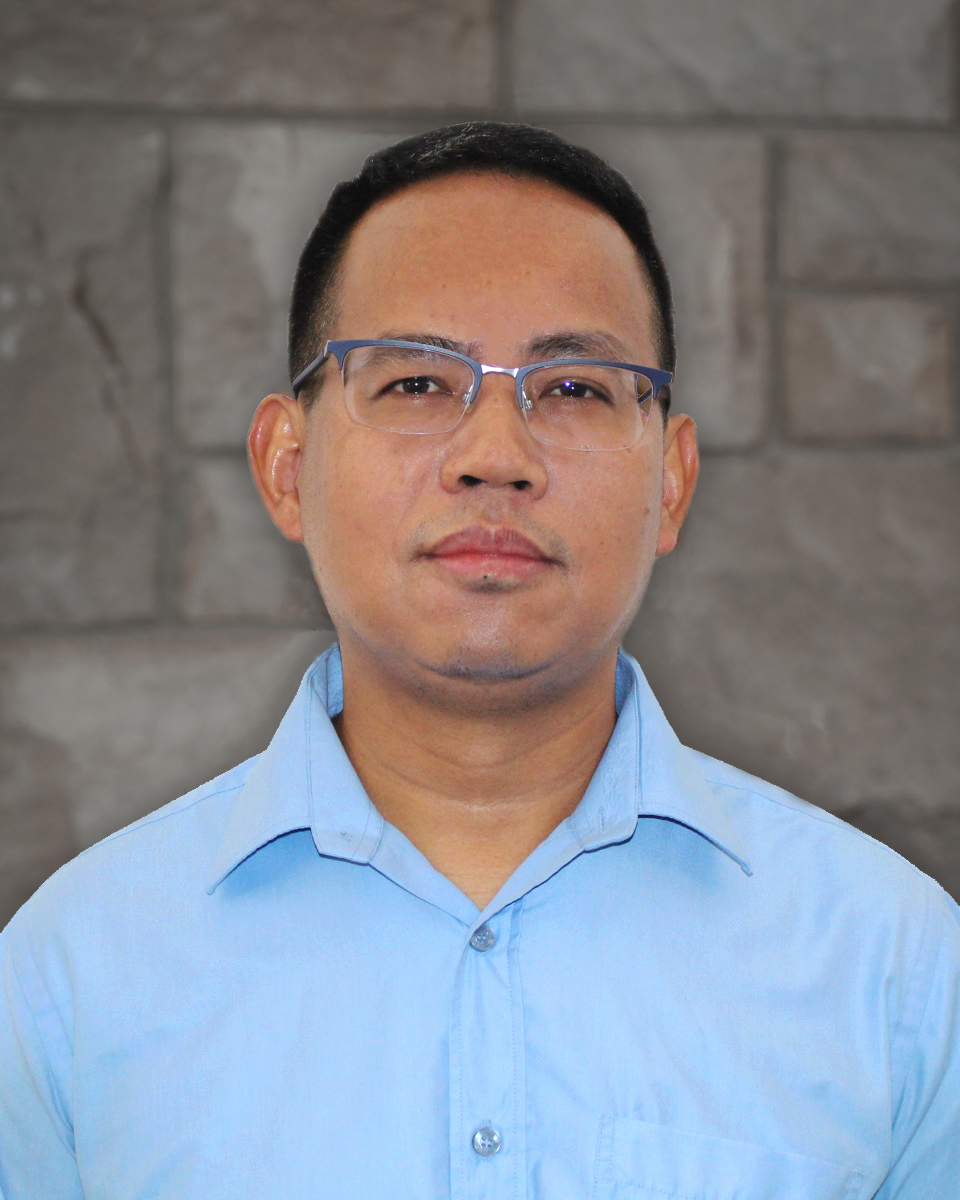
Hom Nath Gharti, Ph.D.
Assistant Professor | Digital Earth Scientist Department of Geological Sciences and Geological Engineering, Queen's UniversityHom Nath Gharti leads the Digital Earth Science Lab. He has expertise in computational geophysics, geotechnical engineering, applied mathematics, and high-performance computing. He was an associate research scholar and a postdoctoral research associate in the Department of Geosciences, Princeton University, US. He received a Ph.D. in geophysics from the University of Oslo and NORSAR, Norway, and an MSc in earthquake engineering from the University of Tokyo, Japan. He holds a B.E. in civil engineering and a Diploma in mechanical engineering, with the highest Distinction from Tribhuvan University, Nepal. His research area encompasses applied mathematics and computational (geo)mechanics, including (an)elastic-gravitational wave propagation, coseismic deformation and post-earthquake relaxation, glacial isostatic adjustment, gravity/magnetic anomalies, microearthquakes; and hexahedral meshing and scientific visualization. He is the lead developer of a number of geoscientific software packages to solve the problems in those areas.
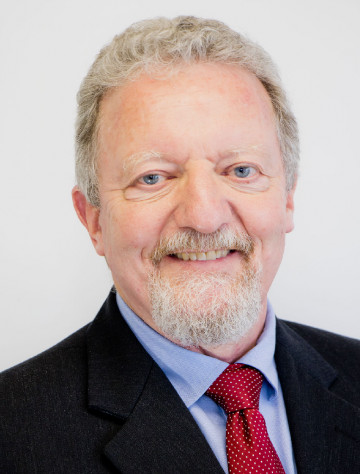
Gerhard Pratt, Ph.D., PEng.
Adjunct Professor Department of Geological Sciences and Geological Engineering, Queen's UniversityGerhard Pratt worked as a professional engineer in the Oil & Gas industry before the start of his academic career. He obtained an MSc and PhD from Imperial College, London UK in the late 1980s, he was a post-doctoral fellow at the University of Toronto, and he was then a professor in three Earth Science Departments: At Imperial College from 1992 until 1998, at Queen's University until 2008, and finally at Western University until 2021. He is now retired and living in Kingston, Ontario. He is currently appointed as an Adjunct Research Professor at both Western and Queen's.
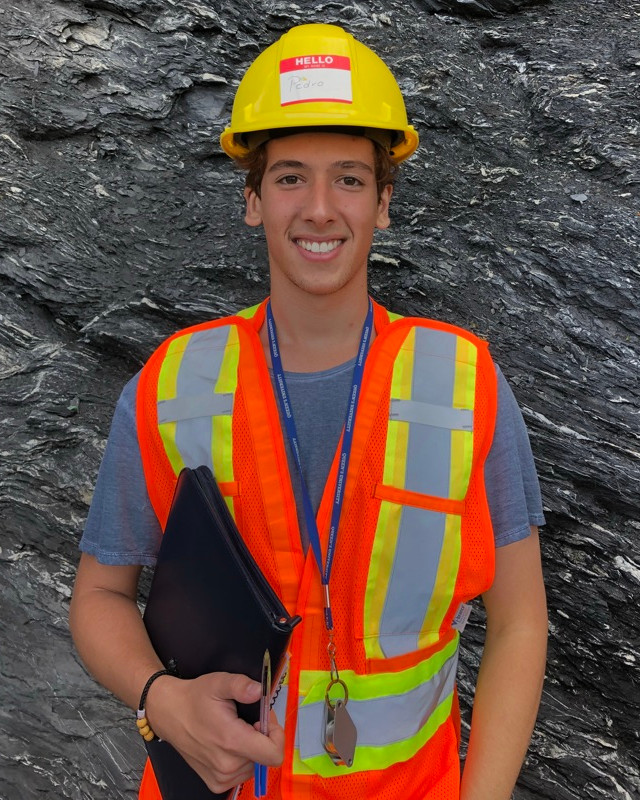
Pedro Lapietra Garcia
Graduate Student Department of Geological Sciences and Geological Engineering, Queen's UniversityMy research primarily targets the modelling and simulation of sound propagation, specifically focusing on noise in urban environments. The overarching objective is to cultivate a proactive methodology for investigating the ramifications of loud, man-made signals, notably those originating from planes, trains, and automobiles, on their respective urban landscapes. A prevalent strategy in my current research is the generation of noise maps, which provide a clear visual representation of the acoustic landscape surrounding regions prone to high noise pollution. Residential areas that share proximity to rail lines and airports are of particular concern due to the regularity and intensity of noise exposure. This is primarily due to the mounting body of evidence highlighting the detrimental effects of chronic noise exposure on both physical and psychological health.
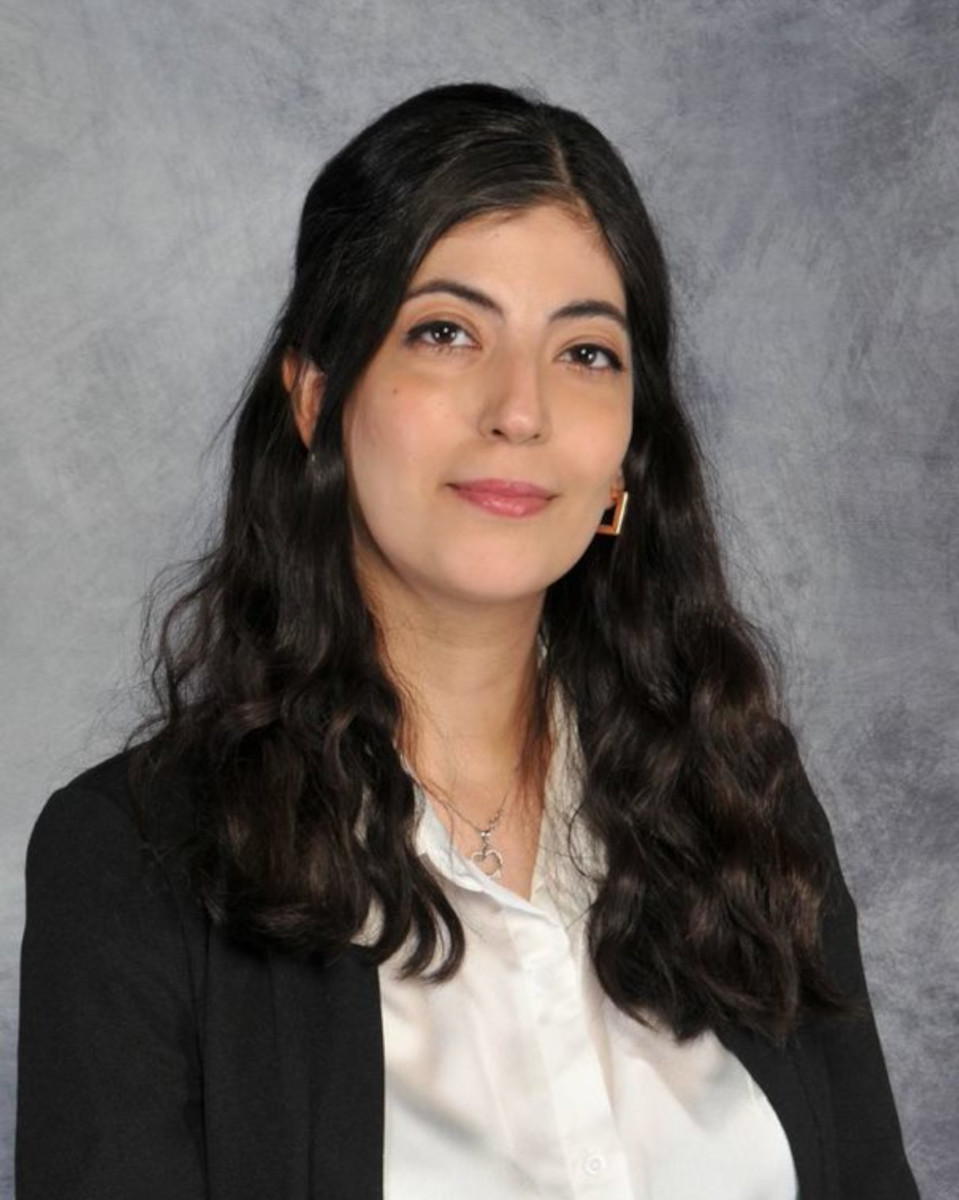
Kiana Damavandi
Grauate Student Department of Geological Sciences and Geological Engineering, Queen's UniversityOriginally from Iran, I graduated from the University of Tehran with a degree in Mining Engineering. For my previous degree, I conducted geoelectrical modelling of landslide surfaces using an unstructured mesh. Furthermore, I have research experience in the exploration of manganese minerals using the gravity database. In the past, I worked as a researcher at the UNIDRO research institute. I was able to find creative solutions to mining industry issues such as deep exploration of iron ores by finding out what methods were implemented around the world. Understanding the geophysical characteristics of the earth is one of my main interests. As part of my current research, I am investigating a spectral-infinite-element solution of forward modelling in the induced polarization method. Reading fiction books, spending time with friends, and learning new things are some of my favorite activities in my free time.
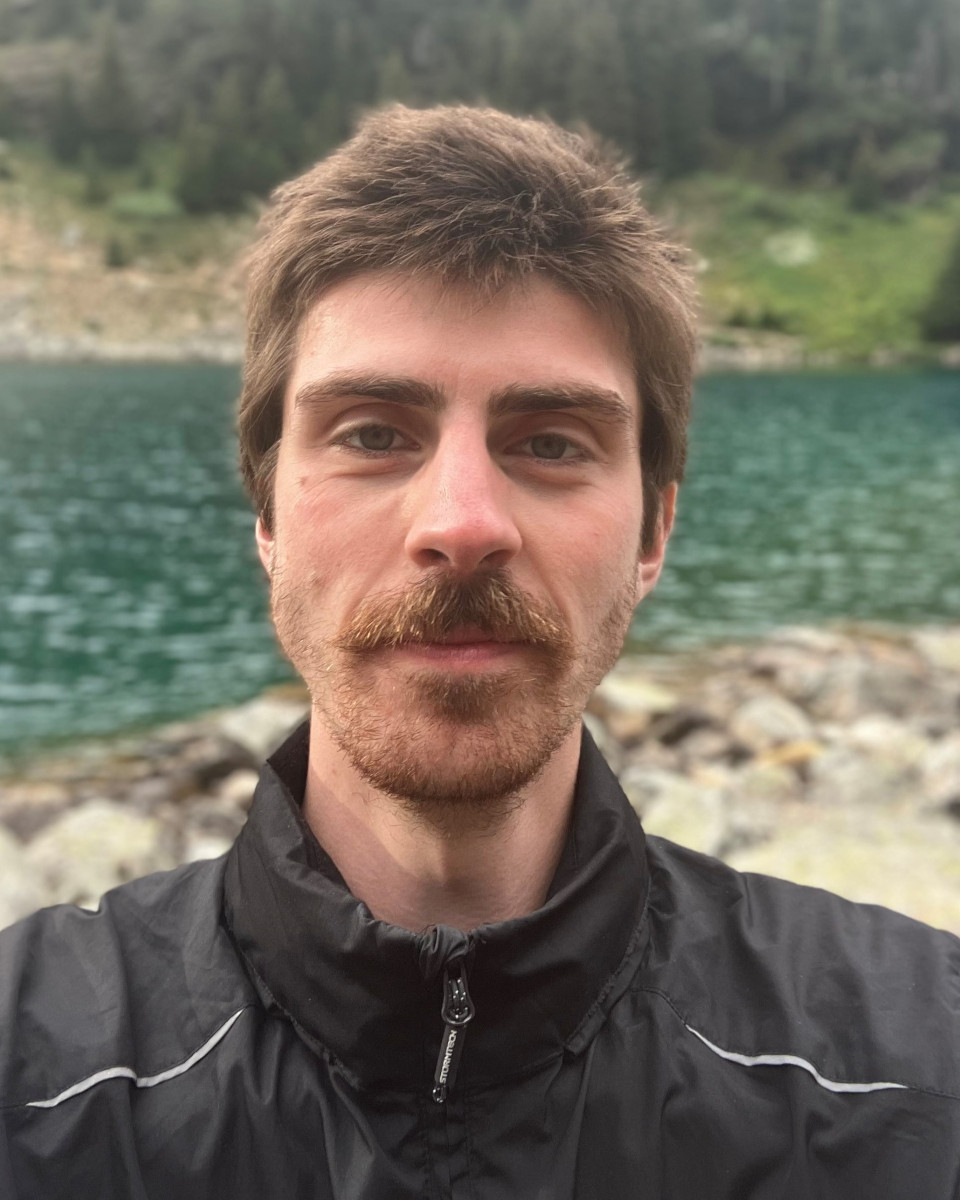
Jack Fitzgerald
Graduate Student Department of Geological Sciences and Geological Engineering, Queen's UniversityJack completed his B.A.Sc. in Geological Engineering at Queen's University in the Spring of 2023. With a diversity of interests, he has tackled projects ranging from rocket payload design to geochemical modelling. His undergraduate capstone project focused on the design and support of underground mine infrastructure. His forthcoming work plans to focus on numerical modelling, micro-seismicity, and ground-penetrating radar.
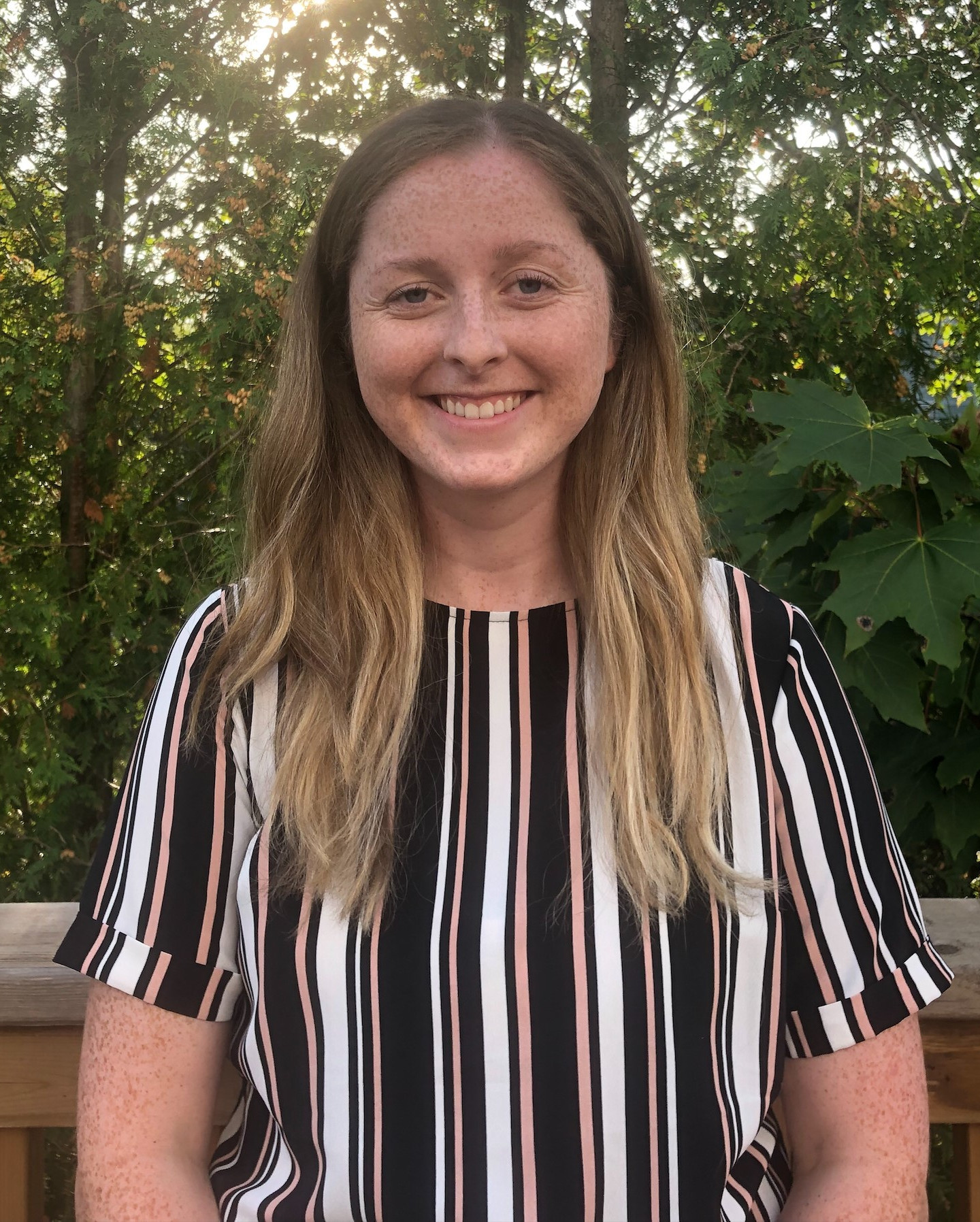
Michelle Pearce
Graduate Student Department of Geological Sciences and Geological Engineering, Queen's UniversityI completed my undergraduate degree in the department of Geological Sciences and Geological Engineering at Queen’s University, and I am currently pursuing a Master’s degree. My research uses the Himalayan system as a prototype for novel three-dimensional numerical modelling to understand if and how lithospheric scale inherited basement faults rooted in the underthrusted plate influence the distribution and magnitude of seismicity in orogenic settings. The models are created using the Coreform Cubit meshing software and are simulated using the SPECFEM3D software on the Digital Research Alliance of Canada’s Advanced Research supercomputer platform hosted at the University of Toronto.
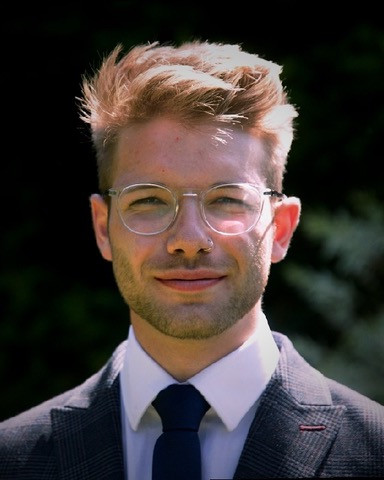
William Eaton
Graduate Student Department of Geosciences, Princeton University, USAI am a current PhD Candidate In Theoretical and Computational Seismology at Princeton University, having completed my Batchelors and Integrated Masters at the University of Oxford. My research interests include deep-Earth structure, scattering of elastic waves on planetary bodies, and numerical modeling of elastogravitational phenomena. In collaboration with Professor Gharti and Professor Jeroen Tromp, I am developing SPECFEMX for applications to modeling Glacio-Isostatic Adjustment and sea-level change.
News
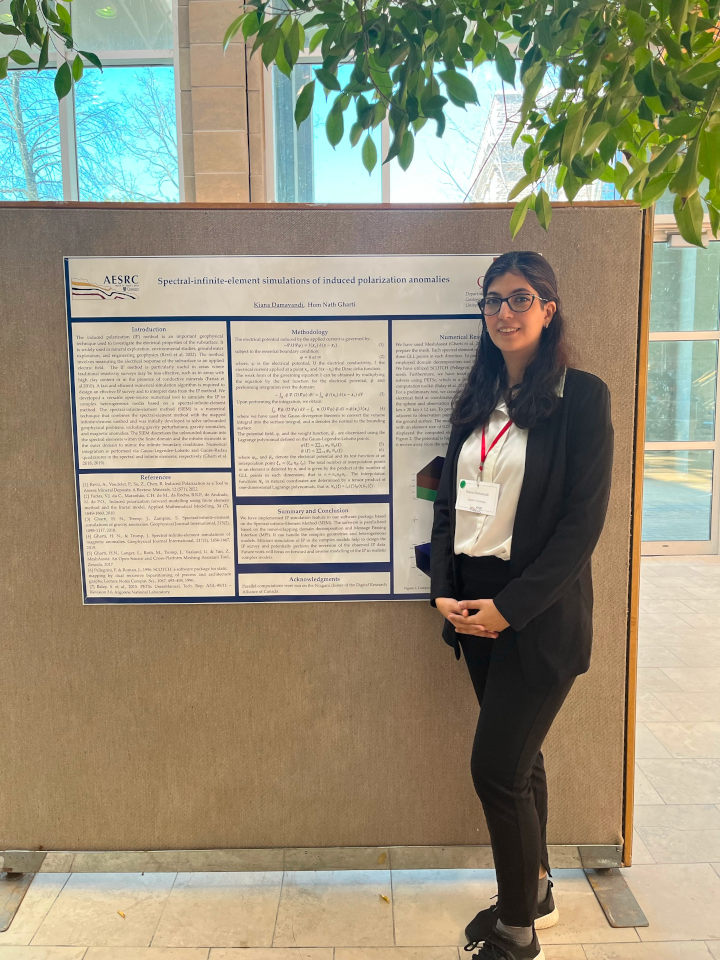
Graduate student receives the CSEG Foundation Scholarship Award
December 04, 2023
Our graduate student, Kiana Damavandi has received the Canadian Society of Exploration Geophysicists (CSEG) Foundation Scholarship for the 2023/24 academic year. Congratulations, Kiana, on receiving the prestigious award!
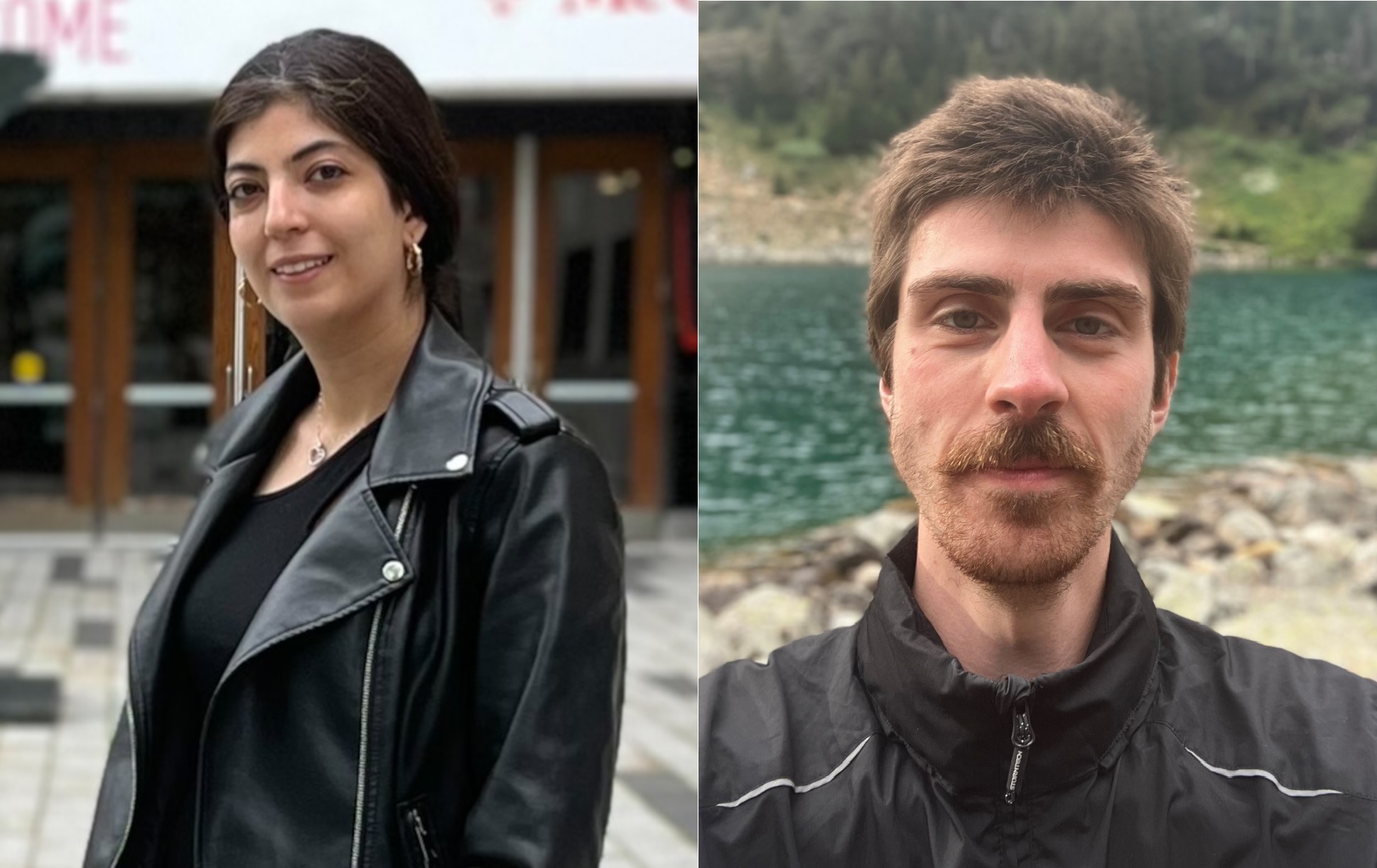
Two graduate students receive the KEGS Foundation Scholarship Award
October 03, 2023
Our graduate students, Kiana Damavandi and Jack Fitzgerald have received the KEGS Foundation Scholarship for the 2023/24 academic year. Congratulations, Kiana and Jack, on receiving the prestigious award!
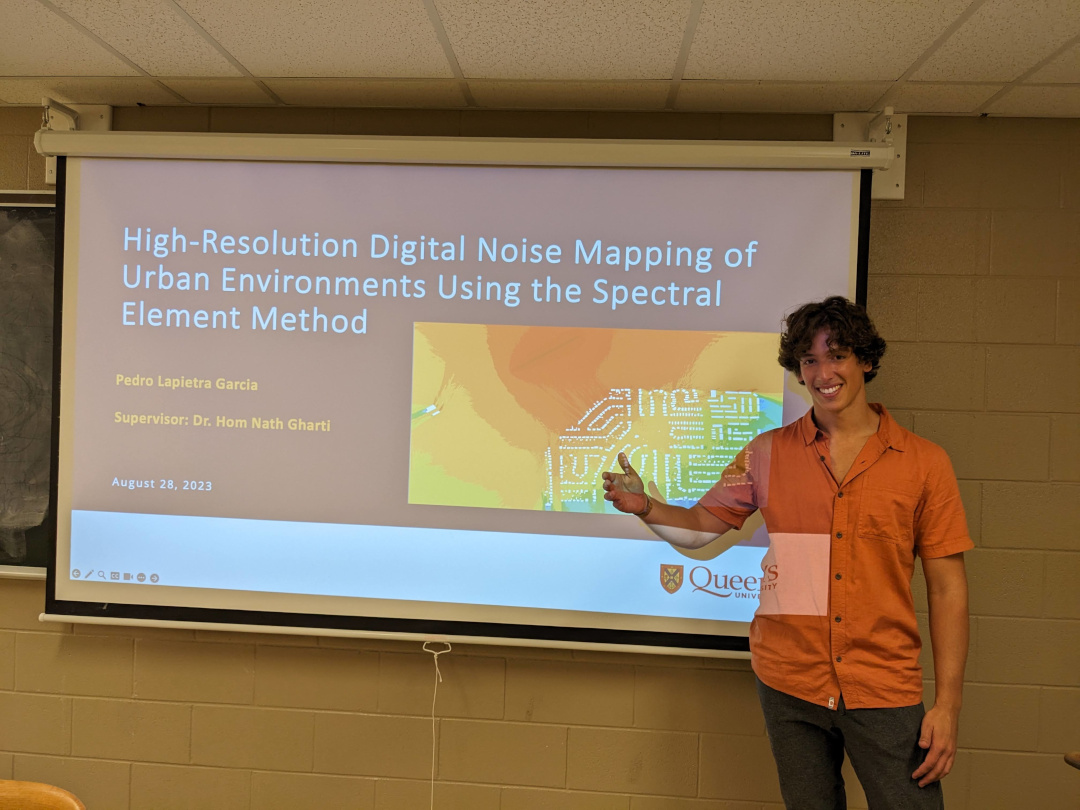
Pedro Lapietra Garcia successfully defends his MSc thesis
August 28, 2023
Our graduate student Pedro Lapietra Garcia successfully defended his MSc thesis entitled "High-Resolution Digital Noise Mapping of Urban Environments Using the Spectral Element Method". Congratulations, Pedro, for your hard work and great achievement!
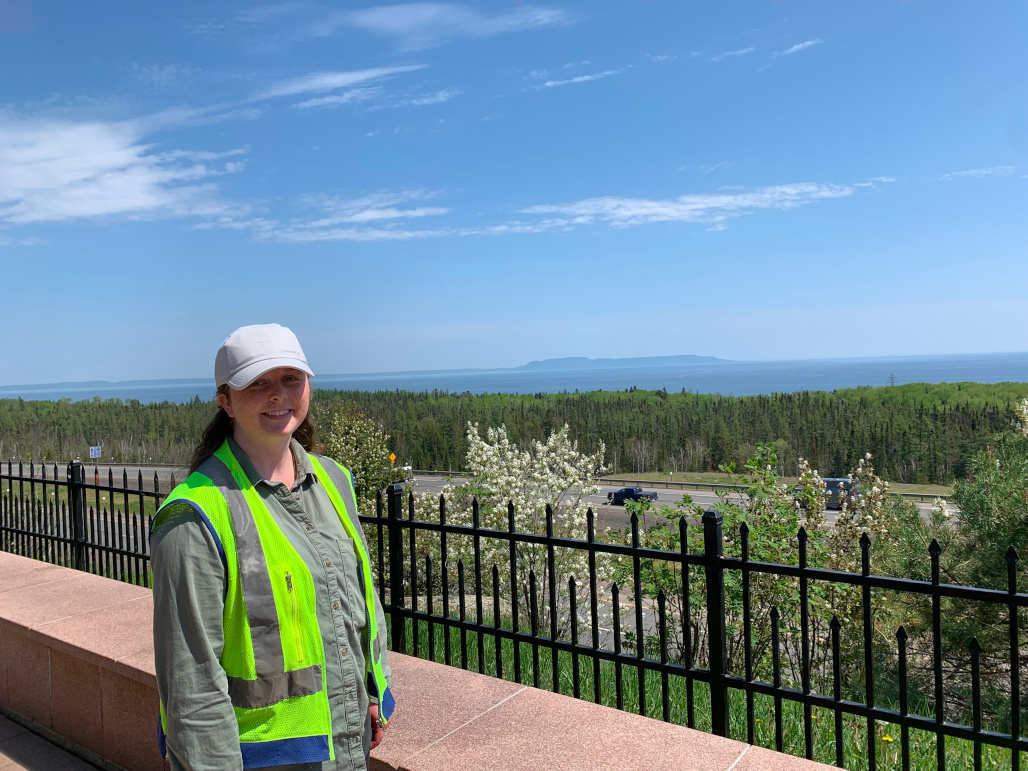
Graduate Student receives the 2023-24 The Queen Elizabeth ll Graduate Scholarship
July 20, 2023
Graduate student Michelle Pearce received the 2023-24 The Queen Elizabeth ll Graduate Scholarship in Science and Technology (QEII-GSST). Congratulations, Michelle, for your outstanding achievement!
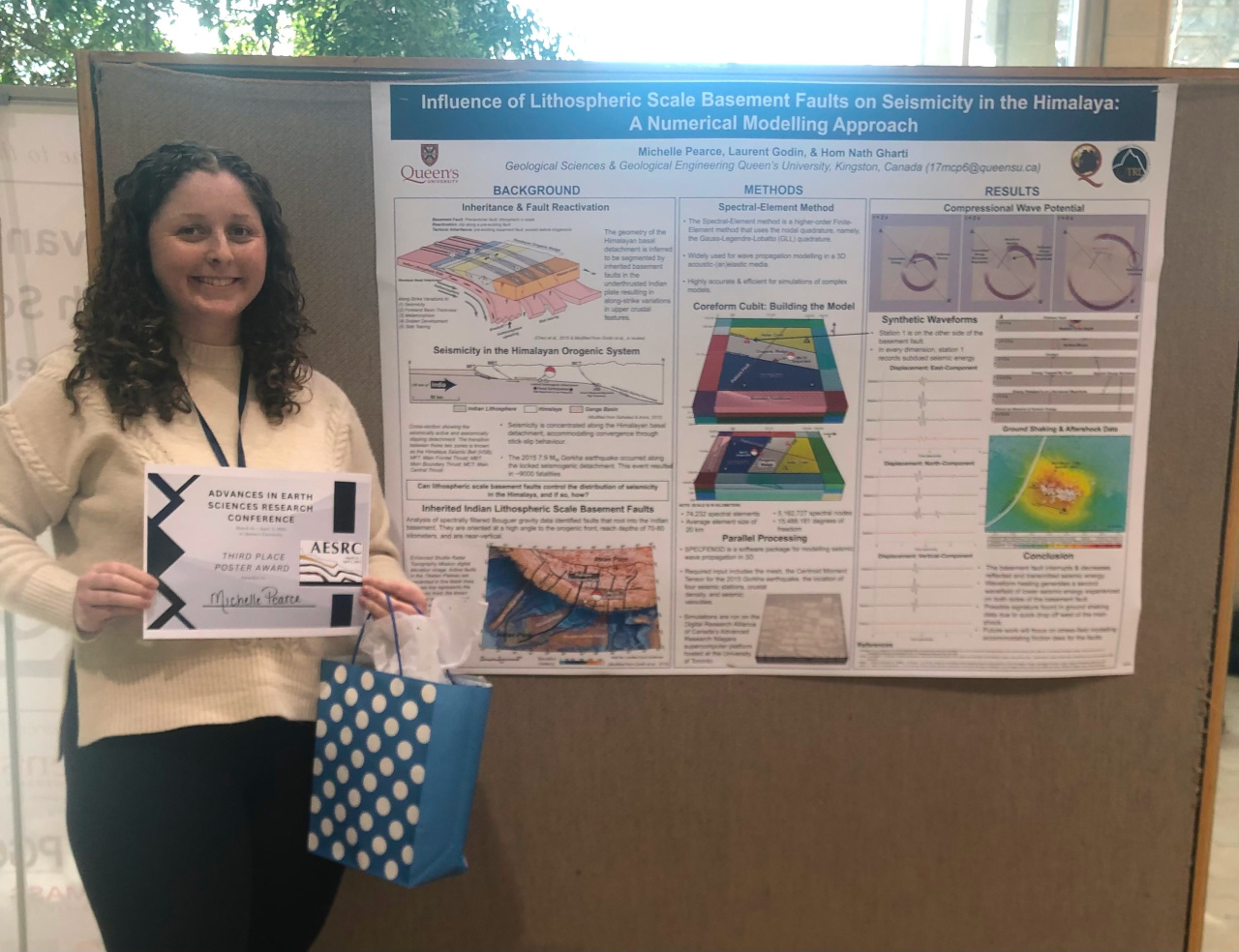
Undergraduate Student Wins Poster Presentation Award
April 03, 2023
Undergraduate student Michelle Pearce won third place for the best poster presentation award at the Advances in Earth Sciences Research Conference (AESRC) held in Kingston, Ontario, from March 31, 2023, to April 2, 2023. Michelle presented her undergraduate thesis work entitled "Influence of Lithospheric Scale Basement Faults on Seismicity in the Himalayan Orogenic System: A Numerical Modelling Approach." Congratulations, Michelle, for your outstanding achievement!
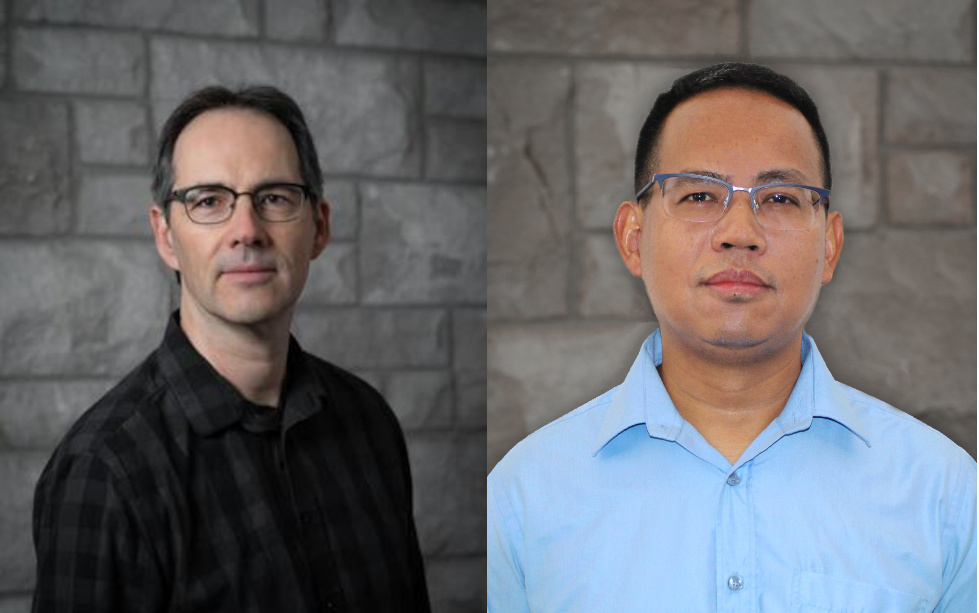
Two Professors Awarded Principal's Impact Courses Grants
June 24, 2022
Congratulations to Dr. Alexander Braun, and Dr. Hom Nath Gharti, on being awarded Principal’s Impact Courses grants. The two proposals were among ten courses selected from across the university.
According to the Queen’s Gazette, “Ten ‘blue sky’ courses have been selected for the Principal’s Impact Courses (PIC) initiative this year. The programs will use funding creatively to support the development of educational experiences that push the boundaries of teaching and learning.”

Graduate Student Receives TAship Award
June 09, 2022
Our graduate student, Pedro Lapietra Garcia received the Wayne Foo and Lynne Marshall Named TAship Award.
Congratulations, Pedro, for your great achievement!

Undergraduate Student Receives Award
April 28, 2022
Out undergraduate student, Dean Bucciarelli received the best undergrad thesis presentation award.
Congratulations, Dean, for your great achievement!
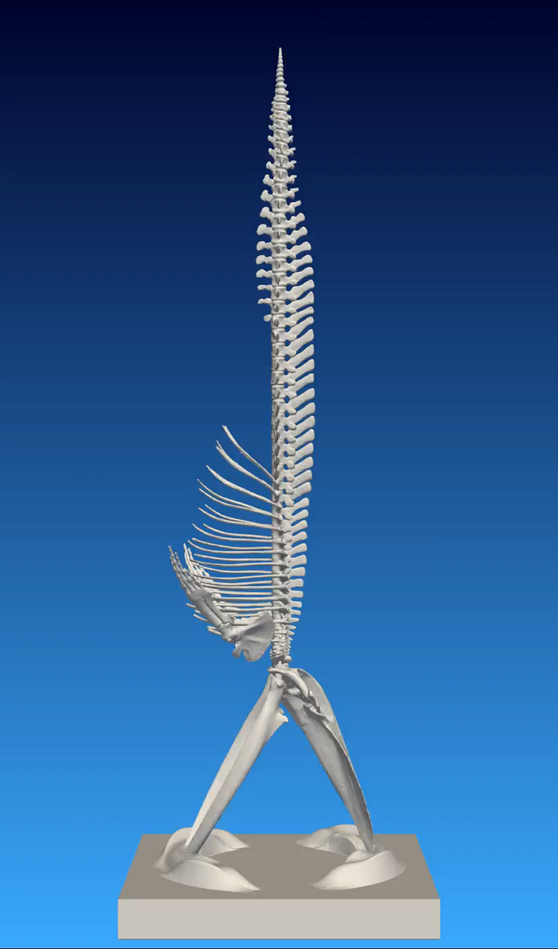
"Standing Whale" Collaborative Project
February 28, 2022
The Faculty of Arts and Science, and the Faculty of Engineering and Applied Science at Queen's, are both partnering with world-renowned Canadian photographer and Queen's Honorary Degree recipient, Edward Burtynsky, to help realize his new public art piece titled, Standing Whale.
The piece will be Edward's first large-scale public sculptural work, and will be a life-size, artistic re-imagining of a whale skeleton.
The Department of Geological Sciences and Geological Engineering will be heavily involved with this exciting project. A design team for course GEOE 446/447 is currently working on the foundation for the structure. The team consists of undergraduate students Deeana Reynolds, Naomi So, and Tommy Tweedie, with technical advisors Dr. Hom Nath Gharti, Dr. Mark Diederichs, and David Didur of Think2Thing Inc., a colleague of Edward Burtynsky's.
Gallery
Contact Us
DESEL
If you have any inquiries about our group, research, or opportunities for collaboration and public outreach, please don't hesitate to reach out to us.
Miller Hall 314, 36 Union St
Queen’s University
Kingston, ON K7L 3N6, Canada
+1 613 533 6180
Join Our Team
We are always seeking ambitious, highly motivated, open-minded people with positive mindset to strengthen our team. If you have strong backgrounds in math, physics, data science, and programming, please consider applying to our team. We strongly value equity, diversity, and inclusion (EDI).
Postdoctoral Research
Currently, there are no available openings for a postdoctoral position. However, if you are interested in collaborating with us and would like to explore potential opportunities in the future, we encourage you to get in touch. You can reach out to us by submitting your comprehensive curriculum vitae (CV) and a concise research proposal. We appreciate your enthusiasm and look forward to considering potential collaborations when suitable positions become available.
Graduate Research
We actively seek positive and highly motivated graduate students eager to make a difference in their chosen fields. If you have strong backgrounds in one or more areas of applied math, computer science, geophysics, geological engineering, and data science, and are strongly interested in our research areas, we warmly invite you to submit your curriculum vitae (CV) and a succinct outline of your research ideas. We value your enthusiasm and are genuinely interested in hearing your unique perspectives.
Undergraduate Research and Design Project
We focus on training the next generation of scientists and engineers, equipping them with the necessary skills to tackle complex challenges. We actively oversee undergraduate research and engineering design projects. If you possess a strong work ethic and a positive mindset, we are fully prepared to help you excel and reach your full potential. Please feel free to contact us with your CV and express your areas of interest. It is worth noting that our past undergraduate students have achieved remarkable success, having received awards for their exceptional theses.
Summer Internship
Summer internship opportunities are generally available through NSERC USRA and Azurite awards. If you have a keen interest in joining us as a summer intern, we encourage you to get in touch with us. Share your CV with us and let us know about your specific areas of interest. We are genuinely enthusiastic about offering you a rewarding learning experience throughout your internship.


